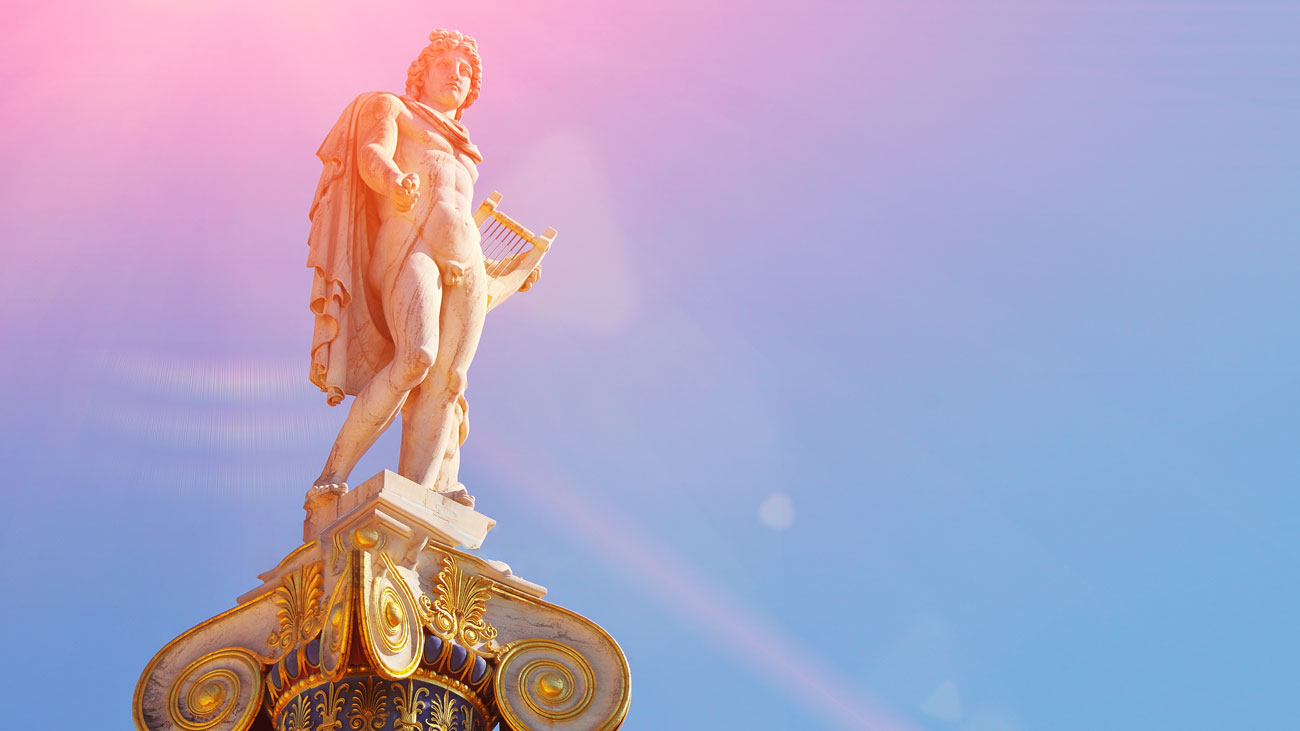The myths and legends of ancient Greece have been captivating and inspiring people for thousands of years. And in Rick Riordan's world of Percy Jackson, we get to experience those myths in a whole new way, through the eyes of heroic demigods and their supernatural companions. Let's explore in detail the roots and connections between Percy Jackson and Greek mythology.
[But before we do, have you ever thought of a Percy Jackson-inspired Mythology Trip to Greece? Check it out!]
Percy Jackson
The name "Percy" is derived from the Greek name Perseus, who was a legendary hero in Greek mythology. Perseus was known for his strength, courage, and resourcefulness, and he was celebrated for his defeat of the Gorgon Medusa and his rescue of Princess Andromeda.
He is a demigod, meaning that he is half-human and half-god, specifically the son of the Greek god Poseidon and a mortal mother.
As a demigod, Percy is part of a world filled with gods, monsters, and magic, all drawn from Greek mythology. Throughout the series, Percy must navigate the dangerous world of the gods and monsters, facing numerous challenges and obstacles along the way.
Percy's connection to Greek mythology is central to his character and his journey. As the son of Poseidon, he has inherited many of his father's powers, including control over water and the ability to communicate with sea creatures. He also faces many of the same challenges as the heroes of ancient Greek myths, such as battling the Minotaur and journeying into the Underworld.
Percy's journey is also in the mold of the hero's journey, a common motif in Greek mythology. He faces many challenges and obstacles, both physical and emotional, as he grows and develops as a character. Along the way, he develops important character traits such as bravery, loyalty, and perseverance, all of which are valued in ancient Greek culture and are present in all tales of legendary heroes, such as Hercules, Theseus and Perseus.
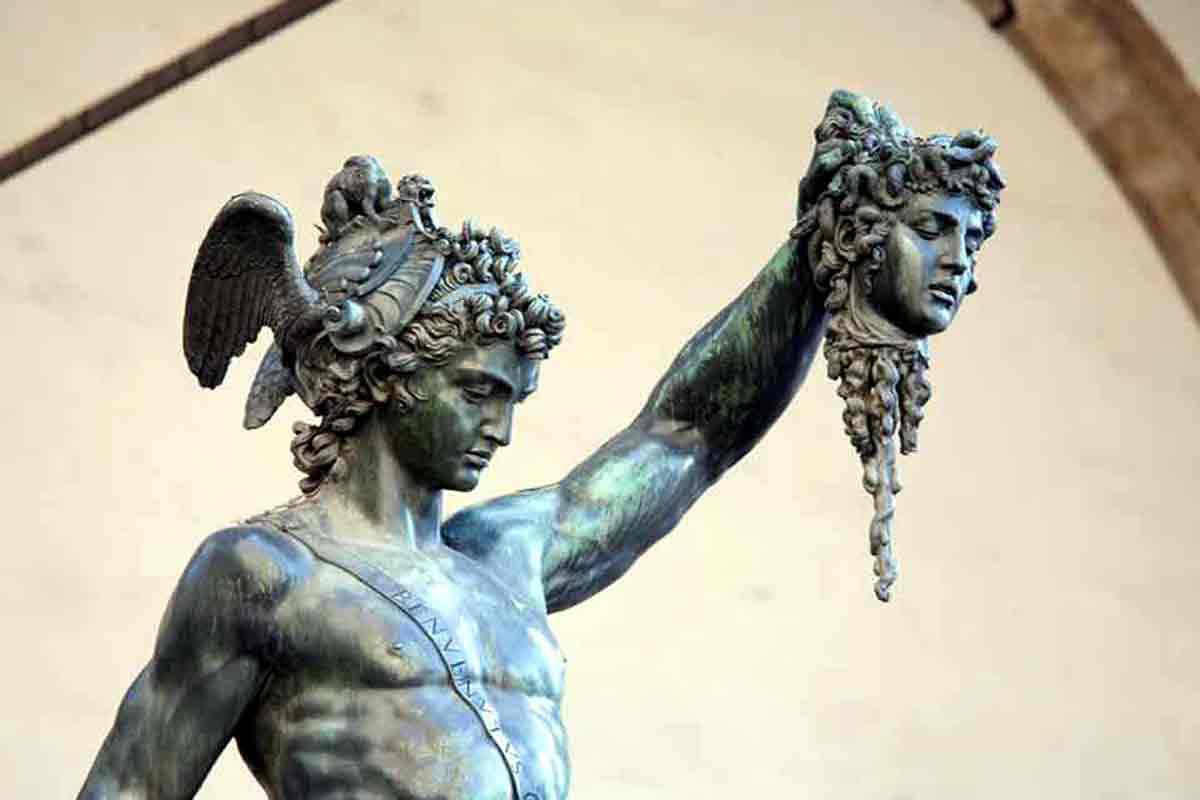
Annabeth Chase and Athena
Annabeth is, like Percy, a demigod (half-human and half-god). She is the daughter of the Greek goddess Athena and a mortal father. Athena, the Greek goddess of wisdom, warfare strategy and crafts, is a prominent figure in the Percy Jackson series. In Greek mythology, Athena was one of the twelve Olympian gods and was revered as one of the most important and powerful gods.
Annabeth's connection to Greek mythology is reflected in many aspects of her character. As the daughter of Athena, Annabeth is incredibly intelligent and strategic. She has a deep love and appreciation for architecture and engineering, reflecting her mother's association with crafts and invention.
Athena's connection to crafts is also reflected in the series. She is associated with architecture and engineering, and her daughter, Annabeth Chase, inherits her love of design and invention. Throughout the series, Annabeth uses her knowledge and skills in crafts to help solve problems and overcome obstacles.
In addition to her role as a mother and mentor, Athena also plays a larger role in the series as a member of the Olympian pantheon. She is often at odds with her rival, the god Poseidon, and her interactions with other gods and goddesses reflect the complicated relationships of the gods in Greek mythology.
Annabeth and her mother, Athena, share one more similarity! According to the myth, Athena was born fully grown and armored from the head of her father, Zeus. Zeus developed a terrible headache and asked the god of blacksmiths, Hephaestus, to open his head with an ax. Athena then emerged from his head, fully grown and wearing armor, and became one of the Olympian gods. Like her mother, Annabeth was a "Brain Child" of Athena, meaning that she was born from the thoughts of the goddess and not in the traditional way.
Tip! If you wish to explore all of those stories at the very places where they took place, you can now take a Percy Jackson-inspired tour in Athens!
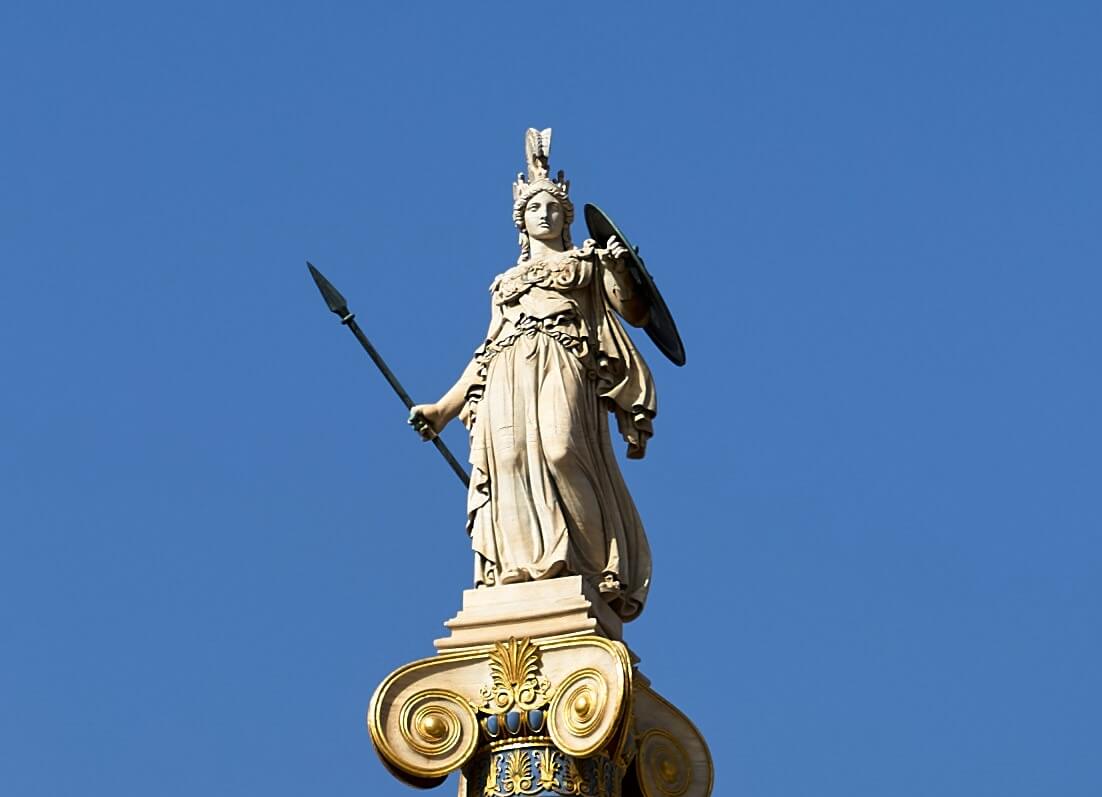
Poseidon
Poseidon, the father of Percy Jackson, is a major figure in Greek mythology. Poseidon was one of the twelve Olympian gods, the brother of Zeus and Hades. He was the god of the sea, earthquakes, and horses, and was revered by seafarers and fishermen.
Poseidon's character in the Percy Jackson series reflects many of the traits and stories associated with him in Greek mythology. Like his mythological counterpart, Poseidon in the series is powerful, imposing and often temperamental (like the sea). He is depicted as having control over the sea and all its creatures, and is feared and respected by those who sail on it.
In Greek mythology, Poseidon is often associated with earthquakes and is said to have caused many disasters and floods throughout history. In the Percy Jackson series, Poseidon's connection to earthquakes is also referenced, and his son Percy is shown to have the ability to control and cause earthquakes.
His relationships with other characters in the series also mirror his relationships in Greek mythology. He is often at odds with his brother Zeus and the two Olympian gods are depicted as rivals in the series.
Athena's and Poseidon's Rivalry
Another significant connection between the Percy Jackson series and Greek mythology is the rivalry between Athena and Poseidon. In Greek mythology, Athena and Poseidon were both Olympian gods and were often portrayed as fierce rivals.
In the Percy Jackson series, the rivalry between Athena and Poseidon is also a central theme. Both gods have children who attend Camp Half-Blood, the camp for demigods, and their children often clash as a result of their parents' rivalry.
The rivalry between Athena and Poseidon stems from their fight over the patronage of the city of Athens, in Greek mythology. According to legend, the two gods competed to see who could create the best gift for the city, and Athena's gift of the olive tree was chosen over Poseidon's gift of a saltwater spring. Thus, the goddess Athena was honored with the patronage of the city of Athens, to the detriment of the god Poseidon.
Throughout the Percy Jackson series, the rivalry between Athena and Poseidon is reflected in the conflicts that arise between their children. Annabeth Chase, daughter of Athena, and Percy Jackson, son of Poseidon, often find themselves at odds with each other, even as they work together to save the world from various threats.
The rivalry between Athena and Poseidon draws a parallel, once again, to the complex relationships between the gods and goddesses of Greek mythology.
Don't miss it! Plan a Percy Jackson Mythology Trip to Greece and bring to life your beloved heroes and gods! Walk where they lived and fought and learn more about them.
The Camp Half-Blood
In the Percy Jackson series, Camp Half-Blood plays a major role as it is the training ground for half-bloods and their only safe place. According to various camp members, the first cohort of trainees was handpicked by the god Apollo and sent to the wise and revered centaur, Chiron, for tutelage. This elite group of Six comprised some of the greatest heroes and warriors in Greek mythology, including the legendary Aeneas, who fought valiantly for Troy in the Trojan War, the intrepid Jason, who led the fabled quest for the Golden Fleece aboard the Argo ship, and the peerless Achilles, who was invulnerable after being dipped in the Styx. Additionally, the cohort included Atalanta, a gifted and acclaimed Huntress, the skilled healer Asclepius, who would become the divine god of medicine, and Perseus, who would go on to vanquish the fearsome Medusa. All those heroes were among the greatest mythical heroes in ancient Greece.
Furthermore, in Greece, there were places where young men could receive physical and mental training to prepare for military service. The most famous of these was the agoge, a rigorous education and training program for young Spartan males. The agoge emphasized discipline, physical fitness, and military training, and aimed to produce strong and capable warriors who were willing to sacrifice their lives for Sparta.
In addition to the agoge, other Greek city-states had similar programs that prepared young men for military service. These programs included training in weapons and combat, physical fitness, and leadership. However, it's important to note that the training was not necessarily focused on creating "heroes" in the sense that we think of them today, but rather on creating skilled soldiers who were able to defend their city-state in times of war. The parallel between these training facilities and Camp Half-Blood is evident.
The Underworld
The Underworld, in Percy Jackson, is deeply rooted in the rich tapestry of Greek mythology, where it is known as the domain of Hades, the god of the dead. According to Greek mythology, the Underworld was a place where the souls of the deceased journeyed after death, to be judged by Hades and his queen, Persephone.
The Underworld is a place of immense power and mystery, filled with complex characters and mythical creatures that have captivated the human imagination for centuries. The river Styx, which is said to divide the world of the living from the world of the dead, plays a pivotal role in the Underworld. In Greek mythology, the river was considered sacred and was believed to grant invincibility to those who bathed in its waters.
Similarly, the ferryman Charon, who is featured in the Percy Jackson series, is a key figure in Greek mythology. According to legend, Charon was responsible for ferrying the souls of the dead across the river Styx to their final resting place.
In addition to these iconic figures, the Underworld in the Percy Jackson series also features the three-headed dog Cerberus, who guards the entrance to the Underworld and ensures that the dead do not escape.
The Underworld is also a place of profound significance in Greek mythology, as it represents the afterlife and the concept of death itself. The idea of being judged by Hades and Persephone and being assigned to either the Elysian Fields or Tartarus based on one's actions in life is a core tenet of Greek mythology.
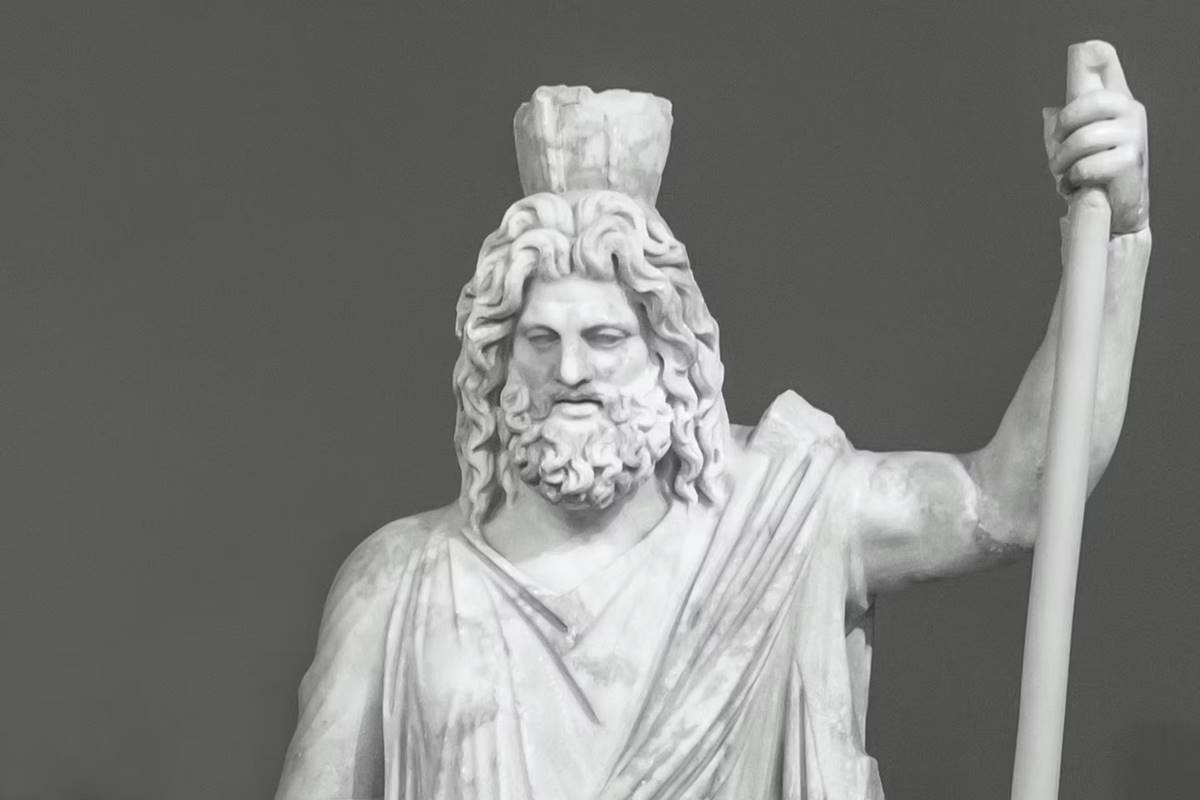
The Oracles
The oracles in Percy Jackson are directly connected to Greek mythology, where oracles played a significant role in religious and political life.
In Greek mythology, oracles were believed to be the voices of the gods and goddesses, through which divine wisdom and prophecy could be communicated to humans. The most famous oracle in Greek mythology was the Oracle of Delphi, located at the Temple of Apollo in central Greece. The Oracle of Delphi was consulted by kings, priests, and common people alike, seeking guidance and wisdom from the gods.
In the Percy Jackson series, the Oracle of Delphi is still an important figure, with the current Oracle being Rachel Elizabeth Dare. The Oracle's prophecies are also a key plot device in the Percy Jackson series, often serving as the driving force behind the actions of the characters. Just like in Greek mythology, the oracles in the series provide insight into the will of the gods and the future, as well as highlight the dangers and challenges that the demigods will face.
The Labyrinth
The Labyrinth in the Percy Jackson books is directly connected to Greek mythology, where the Labyrinth was a mythical maze-like structure designed by the master craftsman Daedalus.
In Greek mythology, King Minos of Crete commissioned Daedalus to build the Labyrinth to imprison the monstrous Minotaur. The Labyrinth was an incredibly complex structure, with winding corridors and dead ends that made it nearly impossible to escape.
In the Percy Jackson series, the Labyrinth is also a central plot element, serving as a powerful tool for the forces of evil. Luke Castellan, a former camper at Camp Half-Blood, sets out to navigate the Labyrinth in order to reach Daedalus, who he believes can help him overthrow the Olympians and rule the world.
As in Greek mythology, the Labyrinth in the Percy Jackson series is a complex structure that poses significant challenges for the characters. Percy and his friends must navigate the maze-like corridors, avoiding traps and monsters along the way, in order to stop Luke's evil plans and save the world.
The Labyrinth in the Percy Jackson series also draws on the larger themes of Greek mythology, such as the struggle between good and evil, the importance of courage and bravery, and the power of knowledge and ingenuity.
The Minotaur
In Percy Jackson, the Minotaur is a powerful monster that guards the entrance to Camp Half-Blood. The Minotaur is directly connected to Greek mythology, where it is a creature that has the head of a bull and the body of a man.
According to the myth, the Minotaur was born from the union of Pasiphae, the queen of Crete, and a beautiful white bull. Poseidon sent the white bull to Pasiphaë's husband King Minos for him to sacrifice in his honor, but King Minos did not sacrifice the bull because he saw that the bull had the most beautiful fur that he has ever seen and let the bull live.
However, Poseidon was spying nearby and saw that Minos had left his white bull alive. Thereafter, mad with rage and anger that Minos had not sacrificed the bull, he cursed Minos by having Aphrodite make Pasiphaë fall in love with the bull. Then, when Poseidon had left for Olympus, Pasiphaë ordered Daedalus to make a fake cow for her to hide inside and lure the white bull. The result of their union was the Minotaur.
The monster was then locked away in the Labyrinth, a maze-like structure designed by Daedalus, the famous inventor. The hero Theseus eventually defeated the Minotaur, using a ball of string that princess Ariadne gave to him to navigate the Labyrinth and find his way out.
In the Percy Jackson series, the Minotaur is also depicted as a powerful and fearsome creature that guards the entrance to Camp Half-Blood. Percy Jackson himself battles the Minotaur in the first book of the series, "The Lightning Thief," and ultimately defeats the monster.
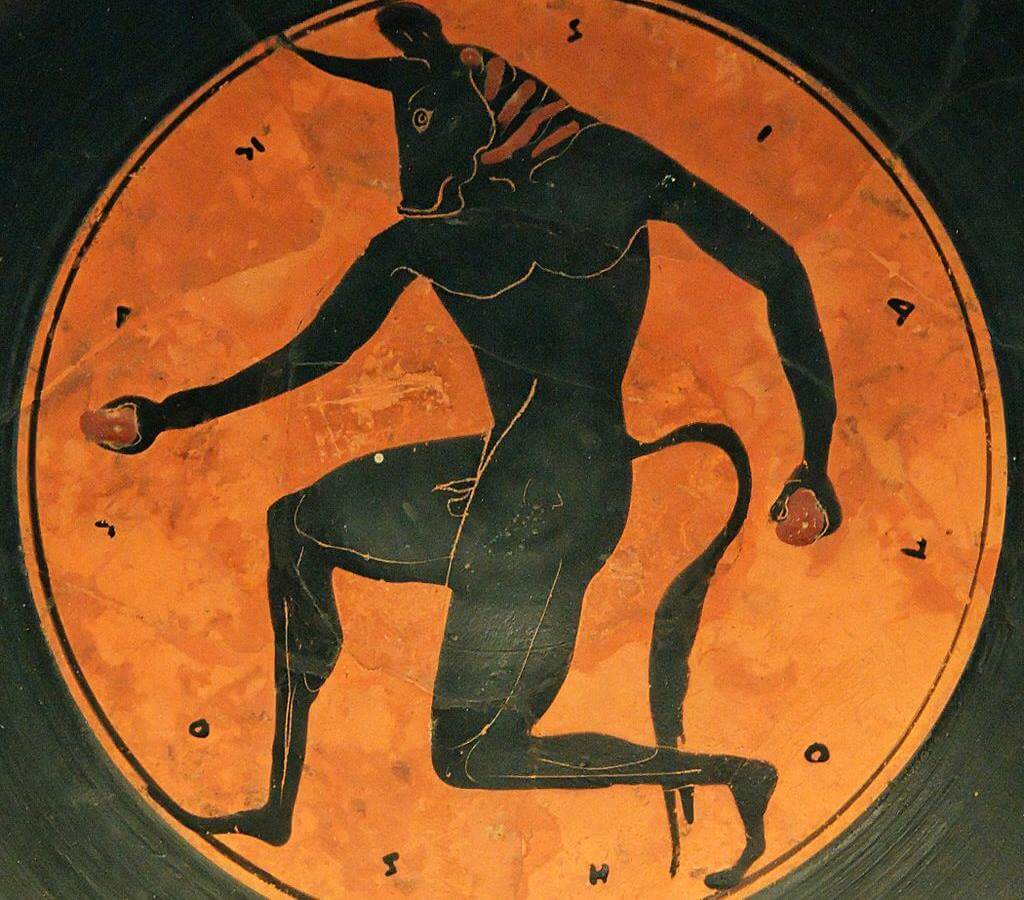
Furies
Furies are closely related to Greek mythology, where they were also known as Erinyes. They were powerful goddesses of vengeance.
In Greek mythology, the Furies were said to punish those who had committed crimes against the natural order, such as murderers, oath-breakers, and those who had mistreated family members. The Furies were depicted as three terrible goddesses with serpents for hair and eyes that dripped with blood. They are spirits of vengeance who serve the god Hades. They are his torturers in the Underworld and punish the crimes of the wicked.
In the Percy Jackson books, the Furies are also powerful supernatural beings that seek vengeance. They are often sent by the gods to punish those who have broken their laws, and they also serve as minions of the series' main villain, Kronos. Later in the series, the Furies make additional appearances, serving as enforcers of the gods' laws and as minions of the main villain, Kronos. They are depicted as powerful and menacing beings who relentlessly pursue the main characters throughout their journey.
The Fates
In the Percy Jackson series, the Fates are supernatural beings who control the destiny of mortals and demigods. They are directly connected to Greek mythology, where they were known as the Moirai or the three Sisters of Fate and were considered to be powerful goddesses who controlled the fate of every living being.
In Greek mythology, the Moirai were depicted as three women who controlled the thread of life, determining when it was spun, measured, and cut. Clotho spun the thread of life, Lachesis measured it, and Atropos cut it. Together, they determined the destiny of every mortal and god.
In the Percy Jackson series, the Fates are also depicted as three women who control the destiny of mortals and demigods. They are shown as being powerful and unforgiving, with the ability to change the course of a person's life with a single thread. Their decisions are final and cannot be challenged.
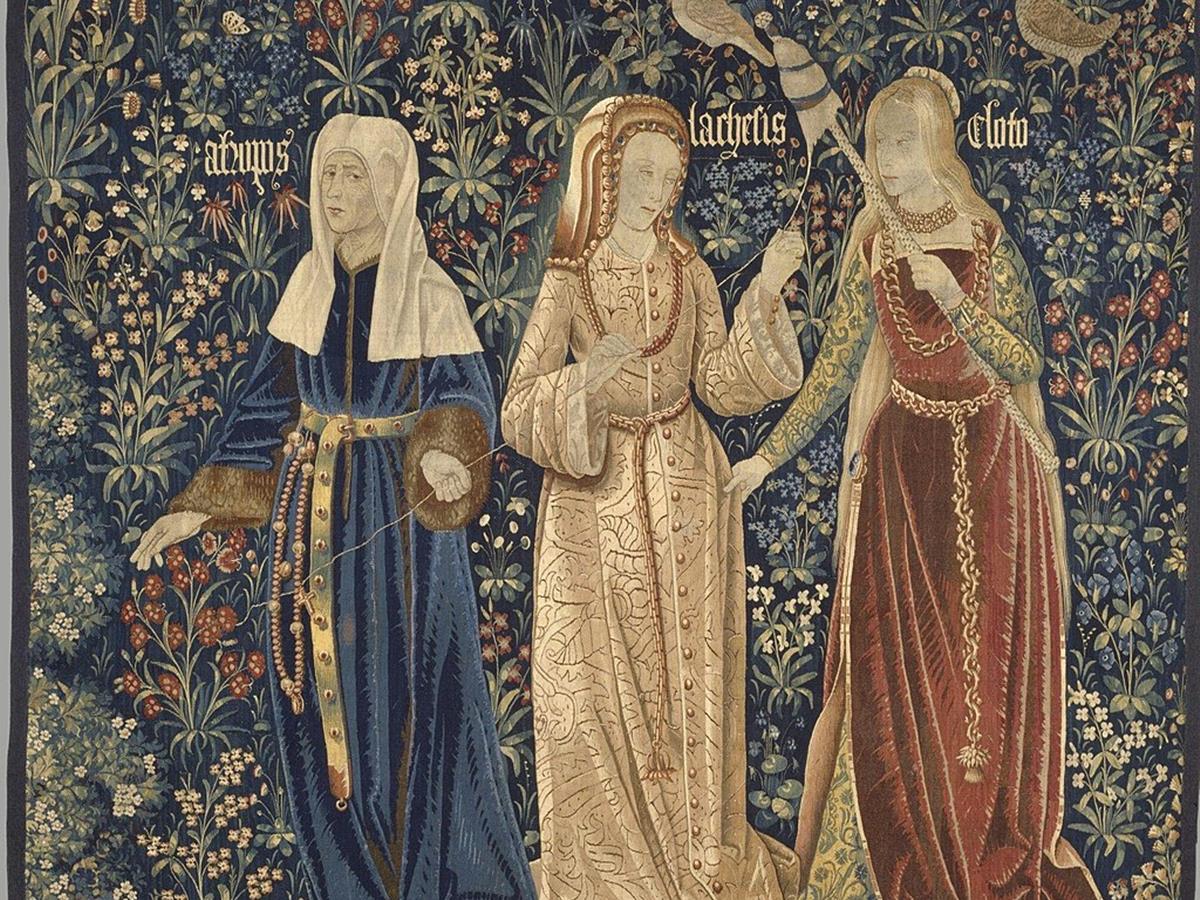
The Golden Fleece
In Greek mythology, the Golden Fleece is the skin of a magical, winged ram that was sought after by Jason and the Argonauts in their quest to retrieve it from Colchis. The fleece was said to possess the power to bring prosperity to the kingdom of its possessor.
In the Percy Jackson series, the Golden Fleece is also a powerful magical artifact that is sought after by the characters. It is said to possess healing powers that can restore the life of the tree that protects Camp Half-Blood. The connection to Greek mythology is evident in the use of the Golden Fleece as a powerful artifact that is sought after by the characters, just as it was in the original myth.
Dionysus
In Greek mythology, Dionysus is the god of wine, fertility, and ecstasy. He is also associated with theater and drama. He is the son of Zeus and Semele, a mortal woman, and is often depicted as a jovial and fun-loving deity who enjoys parties and revelry.
In the Percy Jackson series, Dionysus is also depicted as the god of wine and ecstasy, and the director of Camp Half-Blood. He is often portrayed as a grumpy and sarcastic character, but also has moments of kindness and compassion towards the young demigods at the camp.
The connection to Greek mythology is evident in the use of Dionysus as a character in the series. The portrayal of Dionysus in Percy Jackson stays true to his mythological roots as a deity associated with wine and revelry, and also includes his connection to theater through his role as the patron of drama.

Centaurs and Chiron
In Greek mythology, the centaur is a mythical creature that is half-human, half-horse. They were often depicted as wild and savage beings that lived in the forests and mountains. Centaurs were also known for their knowledge of herbalism and their skill in archery.
In the Percy Jackson series, centaurs are also depicted as half-human, half-horse creatures. They are portrayed as intelligent beings that serve as mentors and guides to the young demigods at Camp Half-Blood. Chiron, a centaur, is one of the main characters in the series and serves as the activities director at the camp. In Greek mythology, Chiron was actually an exception to the wild nature of the Centaurs and was called "the wisest and justest of all the centaurs". He was a healer and an astrologer, and he actually served as a tutor and trainer to some of the most powerful heroes of Greek mythology, like Hercules, Achilles and Jason.

Hermes
In Greek mythology, Hermes is the god of commerce, thieves, travelers, and sports. He is also known as the messenger of the gods and is often depicted wearing a winged cap and sandals.
In the Percy Jackson series, Hermes is portrayed as the father of Luke Castellan, one of the main characters. He is also the god of messengers and communication, and he runs the Olympian courier service, which delivers messages and packages to the gods and demigods.
The character of Hermes in the Percy Jackson series is largely faithful to his mythological counterpart. He is still the god of commerce and messengers and is portrayed as cunning, charming, and mischievous. However, in the series, he is also shown to have a more personal, fatherly relationship with Luke, which is not explicitly stated in Greek mythology.
Ares
In Greek mythology, Ares is the god of war and is often depicted as a fierce and brutal deity who enjoys the chaos and destruction of battle. He is the son of Zeus and Hera, and is often portrayed as a violent and impulsive character who is quick to anger.
In the Percy Jackson series, Ares is also the god of war and is portrayed as a hot-headed and aggressive character. He is often at odds with the other gods and demigods, and is seen as a villainous character who seeks to cause chaos and destruction.
The portrayal of Ares in Percy Jackson stays true to his mythological roots as the god of war and violence, and also includes his combative nature and his fraught relationship with the other gods.
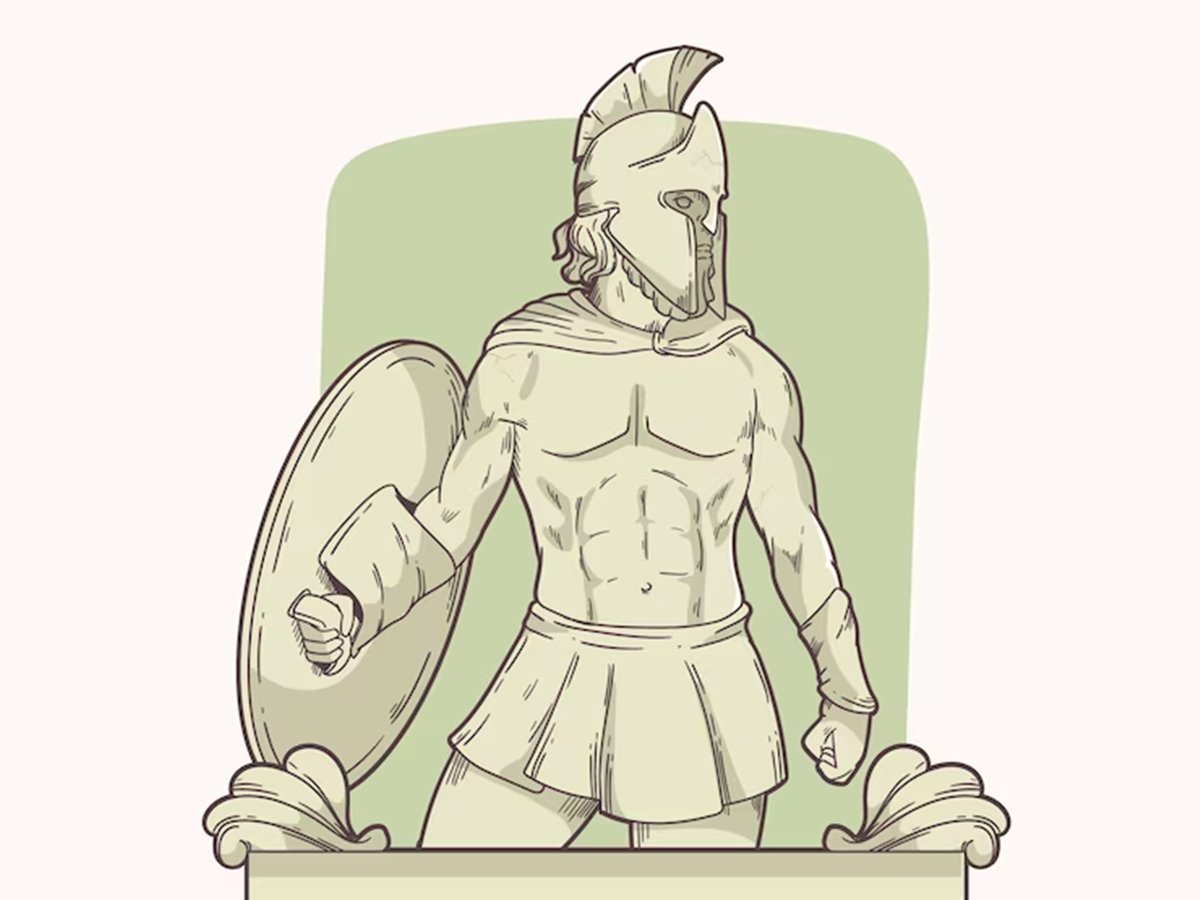
Hellhound
In Greek mythology, the hellhound is known as Cerberus, a three-headed dog that guards the entrance to the underworld, the realm of Hades. In Percy Jackson, the hellhound is also called Mrs. O'Leary, and she is owned by the character Charles Beckendorf.
Mrs. O'Leary is connected to Cerberus in several ways. First, she is also a guard dog, but instead of guarding the entrance to the underworld, she guards the camp of the demigods. Additionally, like Cerberus, Mrs. O'Leary is known for her fierce and loyal nature, as well as her ability to breathe fire.
Furthermore, in the series, it is revealed that Mrs. O'Leary was once owned by the god Hades himself, who gave her to Beckendorf to aid him in his quest to defeat the Titans. This connects her directly to Greek mythology, as Hades is one of the major gods in the Greek pantheon, and is closely associated with the underworld and its inhabitants.
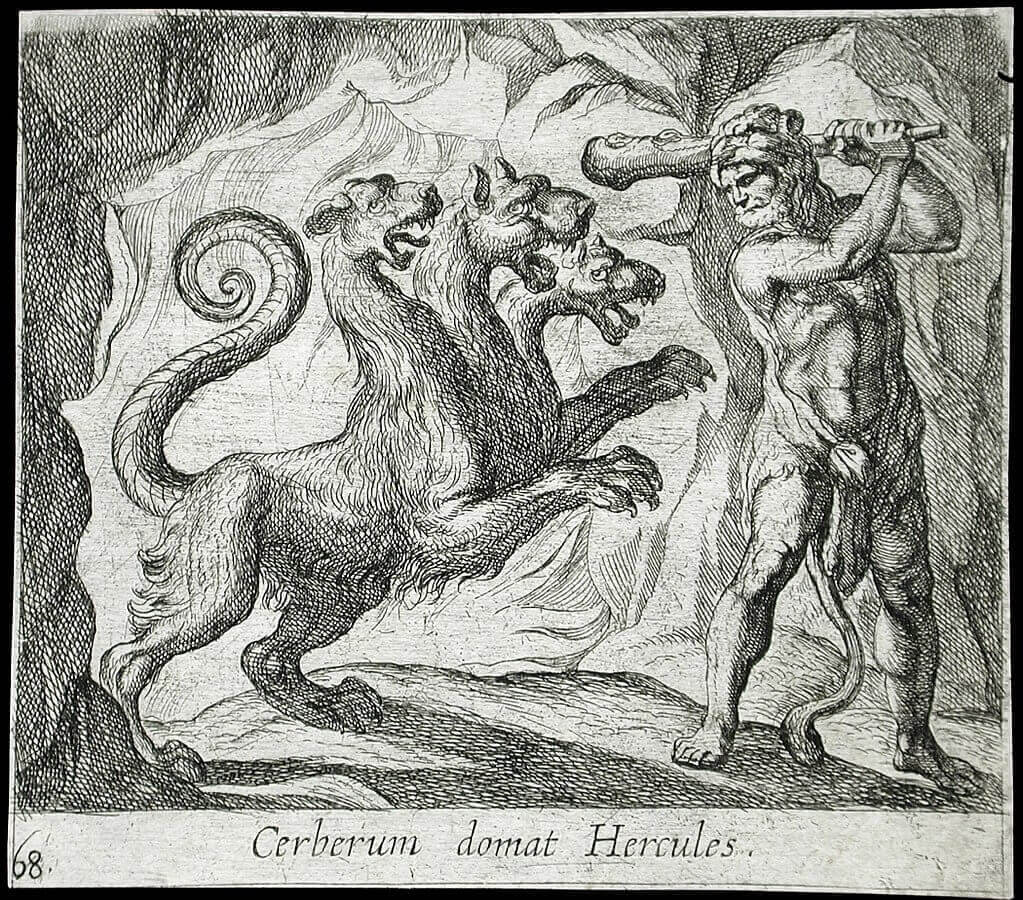
Zeus and his Master Bolt
Zeus is one of the major gods in Greek mythology, and his portrayal in Percy Jackson is largely consistent with his mythological counterpart.
In Greek mythology, Zeus is the god of the sky and thunder, as well as the king of the gods. He is often depicted as a powerful and imposing figure, with lightning bolts as his weapon of choice. Similarly, in Percy Jackson, Zeus is portrayed as a powerful and authoritative figure, and his control over lightning is a major aspect of his character.
One of the key plotlines involving Zeus in the Percy Jackson series is his quest to retrieve his stolen lightning bolt. This is also consistent with Greek mythology, as the lightning bolt is one of Zeus's most powerful weapons, and it was believed that whoever possessed it had immense power.
Additionally, Zeus's relationships with other characters in the Percy Jackson series, such as Poseidon and Hades, are also consistent with their relationships in Greek mythology. For example, Zeus and Poseidon are often depicted as rivals, as they both sought to be the most powerful god. Similarly, Zeus and Hades are often at odds due to Hades' association with the underworld and its darker aspects.
Overall, while there may be some differences in how Zeus is portrayed in Percy Jackson compared to traditional Greek mythology, the basic elements of his character and his relationships with other gods are largely consistent.
In Percy Jackson, Zeus's master bolt is a powerful weapon that he uses to control lightning and storms. The master bolt is also a central plot point in the first book of the series, as Percy and his friends embark on a quest to retrieve it after it is stolen.
In Greek mythology, Zeus's thunderbolt is also a powerful weapon that he uses to control lightning and storms. The thunderbolt is often depicted as a symbol of Zeus's power and authority, and it is said to be able to destroy anything it strikes.
In both the Percy Jackson series and Greek mythology, the theft of the master bolt/thunderbolt leads to a crisis that threatens the balance of power among the gods. In the first book of the series, Zeus accuses Poseidon of stealing the bolt, leading to a conflict between the two gods. In Greek mythology, it was said that the theft of Zeus's thunderbolt caused chaos and upheaval among the gods and mortals alike.
The quest to retrieve the master bolt in Percy Jackson is also similar to other quests in Greek mythology, where heroes would often embark on dangerous journeys to retrieve powerful objects or accomplish great feats. This connection highlights the influence of Greek mythology on the Percy Jackson series and the use of classical mythology as a source of inspiration for modern storytelling.
Summer Solstice
In Percy Jackson, the Summer Solstice is an event where the gods gather at Olympus to discuss important matters and make decisions. In the first book of the series, The Lightning Thief, Zeus calls for the Summer Solstice meeting to discuss the theft of his master bolt.
In Greek mythology, the Summer Solstice was a significant event that marked the longest day of the year and the beginning of the summer season. It was also an important time for festivals and celebrations honoring various gods, including Zeus. The Summer Solstice was considered a time of great power, and it was believed that magical energies were at their peak during this time.
Similarly, in Percy Jackson, the Summer Solstice meeting at Olympus is a time when the power of the gods is on full display. The meeting is attended by all of the major gods, including Zeus, and their decisions have far-reaching consequences for the mortal world.
Overall, the Summer Solstice meeting in Percy Jackson serves as a connection to Greek mythology, highlighting the importance of celestial events in ancient Greek culture and their continued influence in modern interpretations of the gods and their powers.
Medusa
In the series, Medusa is a monster with snakes for hair and the ability to turn people to stone with her gaze. She is one of the many mythical creatures encountered by Percy and his friends throughout the series.
In Greek mythology, Medusa was also a monster with snakes for hair and the ability to turn people to stone with her gaze. She was once a beautiful woman, but after she was seduced by Poseidon in Athena's temple, Athena punished her by turning her into a monster. Medusa was later killed by Perseus, who used a mirrored shield to avoid her gaze and cut off her head.
The depiction of Medusa in Percy Jackson closely follows the Greek myth, with her monstrous appearance and deadly gaze. The story of Medusa also reflects the common theme in Greek mythology of the dangers of pride and vanity. In both Percy Jackson and Greek mythology, Medusa's transformation into a monster serves as a punishment for her pride and arrogance.
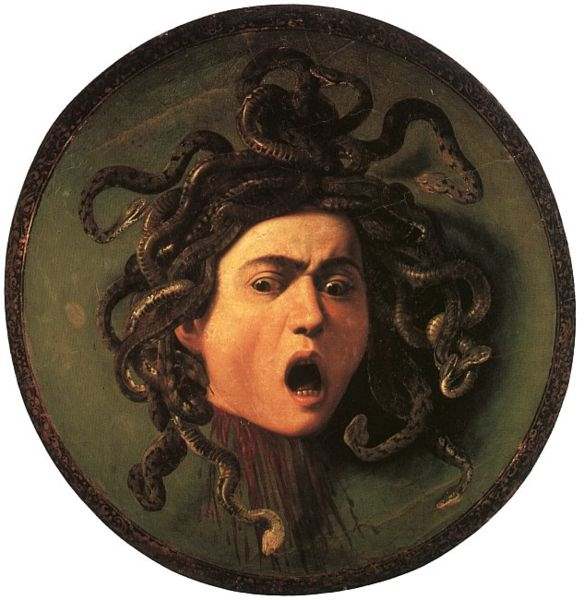
Echidna and Chimera
Echidna and Chimera are both creatures from Greek mythology, and they are also featured in the Percy Jackson series.
In Greek mythology, Echidna was a half-woman, half-serpent creature who lived in a cave and gave birth to a number of monsters, including the Sphinx, the Nemean Lion, and the Hydra. She was eventually killed by the hero Argus.
Chimera was a fire-breathing monster with the head of a lion, the body of a goat, and the tail of a serpent. According to legend, it was killed by the hero Bellerophon, who rode the winged horse Pegasus.
In the Percy Jackson series, Echidna is the mother of monsters and is featured as a major antagonist. Chimera is a monster that appears as a minor antagonist and is defeated by Percy Jackson and his friends. Both creatures are depicted in a way that is faithful to their Greek mythological origins, and their inclusion in the series helps to connect the modern-day adventures of Percy Jackson to the rich mythology of ancient Greece.
Hephaestus
Hephaestus, the Greek god of fire, metalworking, and craftsmanship, is a character in the Percy Jackson series and is closely connected to Greek mythology.
In Greek mythology, Hephaestus was born to Hera, the queen of the gods, and was often depicted as a skilled blacksmith and metalworker. He was known for crafting powerful weapons for the gods and heroes, such as Zeus's thunderbolts and Achilles' armor.
Hephaestus was also famous for his deformity, which made him lame and awkward.
In the Percy Jackson series, Hephaestus is a recurring character who runs the forge in the Underworld. He is depicted as a skilled metalworker who creates powerful weapons and armor for the gods and demigods. Like his mythological counterpart, he is also portrayed as having a physical deformity, which is a source of insecurity for him.
Hephaestus's presence in the Percy Jackson series helps to connect the modern-day adventures of the demigods to the rich mythology of ancient Greece. His skills as a craftsman are often called upon by the characters to help them in their quests, and his physical disability serves as a reminder of the complex and flawed nature of the Greek gods.
Aphrodite
Aphrodite, the Greek goddess of love, beauty, and sexuality, is a major character in the Percy Jackson series and is closely connected to Greek mythology.
In Greek mythology, Aphrodite was born from the foam of the sea and was often depicted as a beautiful woman who had the power to inspire love and desire in others. She was married to Hephaestus, but she had affairs with other gods and mortals, including Ares, the god of war. She was also associated with the planet Venus and was often depicted with a dove or a swan.
In the Percy Jackson series, Aphrodite is a major character who is depicted as vain, manipulative, and often petty. She is concerned with beauty, romance, and popularity, and is often involved in the romantic entanglements of the other characters. She is also known for her magic girdle, which has the power to make anyone fall in love with the wearer.
Her power over love and desire is often called upon by the characters to help them in their quests.
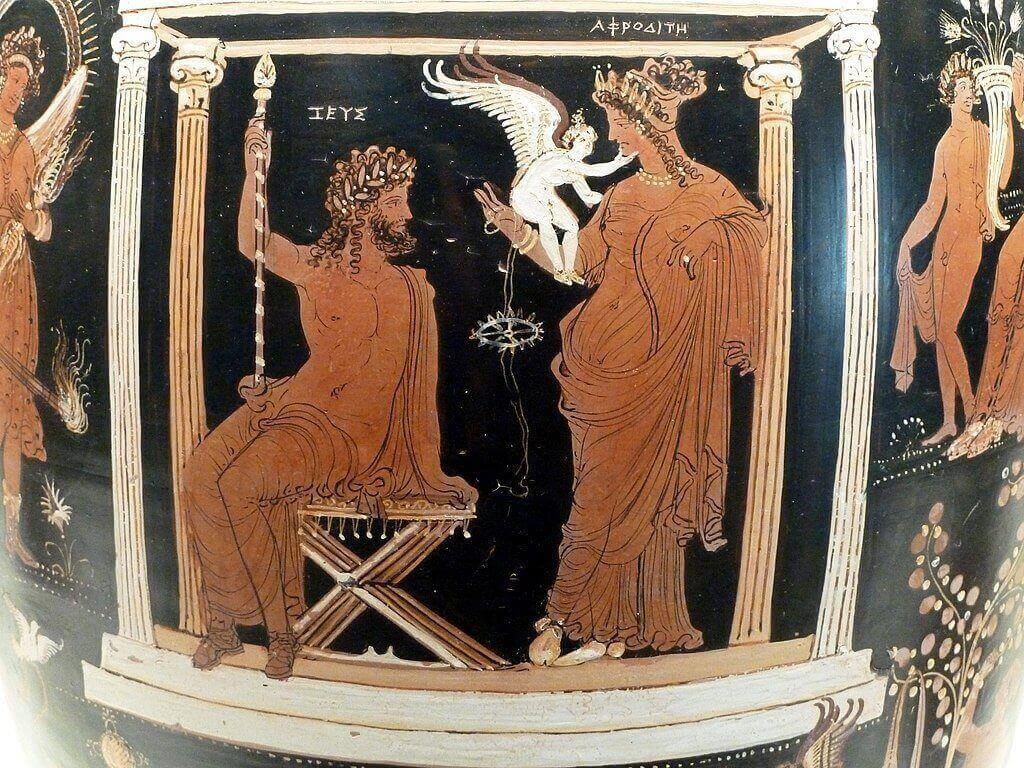
Lotus Eaters
In Greek mythology, the Lotus Eaters were a group of people who lived on an island and ate a plant called the lotus, which had the power to make people forget their homes and families. Odysseus and his men encountered the Lotus Eaters during their journey home from the Trojan War, and some of his men were enchanted by the lotus and had to be dragged back to the ship.
In the Percy Jackson series, the Lotus Eaters are depicted as a casino and resort in Las Vegas, where time seems to stand still and visitors can become trapped for years without realizing it. The lotus flower is also used in the casino's drinks and snacks, causing visitors to become addicted and forget about their past lives. Percy and his friends visit the Lotus Hotel and Casino in The Lightning Thief, and they have to use their wits and courage to escape before they become trapped forever.
Nereids
The Nereids are a group of sea nymphs in Greek mythology and they were the daughters of Nereus, the old man of the sea, and were often depicted as beautiful young women who lived in the Aegean Sea. They were associated with the sea and with sailors and were often depicted as helpful or playful, sometimes rescuing sailors who were in danger at sea.
In the Percy Jackson series, the Nereids are minor characters who are also depicted as sea nymphs. They are often seen in the company of Poseidon, the god of the sea, and are portrayed as helpful to Percy and his friends during their adventures. In The Sea of Monsters, Percy encounters the Nereid Thalia, who helps him on his quest to find the Golden Fleece.
Procrustes
In Greek mythology, Procrustes was a bandit who had an iron bed that he would force travelers to lie on. If they were too short, he would stretch them on a rack until they fit the bed, and if they were too tall, he would chop off their legs to make them fit. Theseus, the legendary hero of Athens, eventually defeated Procrustes and put an end to his reign of terror.
In the Percy Jackson series, the Procrustes are depicted as giant humanoid creatures who have the power to stretch or shrink their bodies to fit any space. They are servants of Kronos, the Titan lord, and are depicted as being loyal to him above all else. Percy and his friends encounter the Procrustes in The Last Olympian and have to use their skills and powers to defeat them.
Charon
In Greek mythology, Charon is the ferryman of the dead who transports the souls of the deceased across the River Styx to the Underworld. He is often depicted as a grim figure, and requires payment in the form of a coin placed on the tongue of the deceased in order to transport them safely to the afterlife.
In the Percy Jackson series, Charon is depicted as the ferryman of the dead who transports the souls of the deceased to the Underworld. He is shown as a skeletal figure with glowing red eyes and a hooded cloak, and requires payment in the form of a golden drachma to ferry the living across the River Styx to the Underworld. Percy and his friends encounter Charon in The Lightning Thief when they enter the Underworld in search of Zeus's stolen lightning bolt.
Charon's role as the ferryman of the dead is a reminder of the importance of death and the afterlife in Greek culture, and his appearance as a skeletal figure is a testament to the eerie and macabre elements of many Greek myths. The requirement for payment in the form of a golden drachma is also in keeping with the tradition of placing a coin on the tongue of the deceased in Greek mythology.
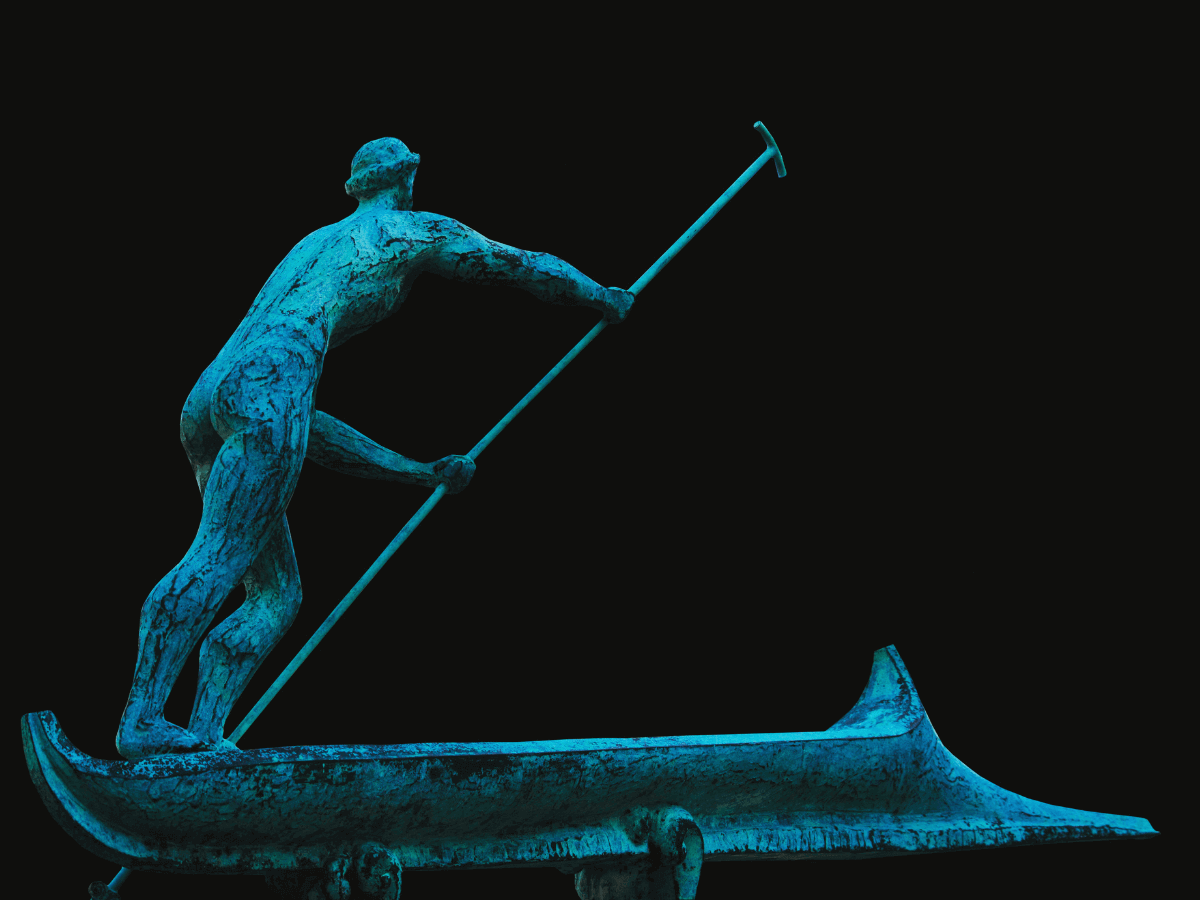
Mount Olympus
In Greek mythology, Mount Olympus is the highest mountain in Greece and is believed to be the home of the twelve Olympian gods and goddesses. The summit of the mountain was believed to be their meeting place, and it was where they held court and made decisions about the mortal world.
In the Percy Jackson series, Mount Olympus is also depicted as the home of the twelve Olympian gods and goddesses. It is shown as a majestic mountain peak, shrouded in clouds, and located above the Empire State Building in New York City. Percy and his friends visit Mount Olympus in The Lightning Thief to seek help from the gods in their quest to retrieve Zeus's stolen lightning bolt.
Cyclopes
The Cyclopes are a race of one-eyed giants who are known for their great strength and skill as blacksmiths. They are depicted as living in the depths of the earth and were believed to have created the thunderbolts wielded by Zeus and other powerful weapons and tools.
In the Percy Jackson series, the Cyclopes are also depicted as one-eyed giants with great strength and skill as blacksmiths. Percy and his friends encounter several Cyclopes throughout their adventures, including Tyson, who becomes one of Percy's closest allies.
The Cyclopes' close relationship with Percy and their willingness to help him despite their reputation as fierce and dangerous creatures also reflects the value of loyalty and friendship in Greek mythology.
Laistrygonian Giants
In Greek mythology, the Laistrygonian Giants are a tribe of giant cannibals who are known for their strength and ferocity. They are said to be the children of Gaia, the earth goddess, and are sometimes referred to as the "earthborn." The Laistrygonians are most famously encountered by the hero Odysseus in Homer's epic poem, The Odyssey, where they attack his ships and eat many of his crew.
In Percy Jackson, the Laistrygonian Giants are also depicted as a tribe of giant cannibals with immense strength and ferocity. Percy and his friends encounter the Laistrygonians in The Son of Neptune, where they attack the demigods' ship and try to eat them. The Laistrygonians are depicted as monstrous and terrifying creatures who are nearly invincible in battle.
Kronos
In the Percy Jackson series, Kronos is portrayed as the main antagonist and a powerful Titan who seeks to overthrow the Olympian gods and rule the world. This depiction of Kronos is closely connected to Greek mythology.
In Greek mythology, Kronos (also spelled Cronus) was one of the twelve Titans and the father of the Olympian gods. He was known for his immense power and was often depicted as wielding a sickle or scythe. According to myth, Kronos overthrew his father Uranus and became the ruler of the cosmos, but was later himself overthrown by his son Zeus and was banished to Tartarus.
In the Percy Jackson series, Kronos is also depicted as a powerful Titan with a deep hatred for the Olympian gods. He seeks to overthrow them and rule the world, and is willing to do whatever it takes to achieve his goal. Kronos is depicted as a cunning and manipulative villain who is able to sway many creatures to his side, including some of the demigods.
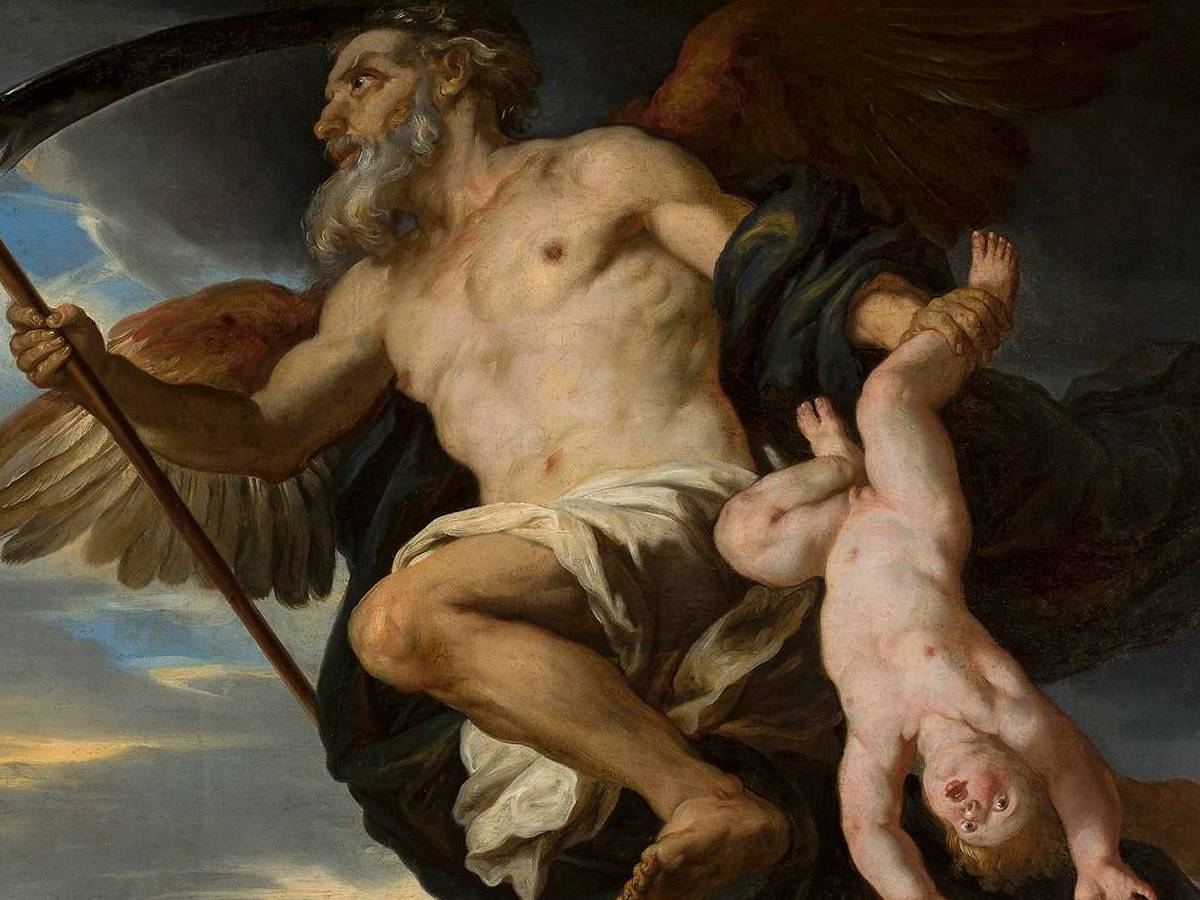
Stymphalian Birds
In Greek Mythology, the Stymphalian Birds were a group of man-eating birds with sharp metallic feathers that lived in the marshes around Lake Stymphalus in Arcadia. The birds were said to have been created by the goddess Artemis, and were said to be so fierce and dangerous that they could kill men with their feathers.
In the Percy Jackson series, the Stymphalian Birds are also depicted as man-eating birds with sharp metallic feathers. Percy and his friends encounter the Stymphalian Birds in The Titan's Curse, where they are being used by the Titan army as weapons. The birds are depicted as ferocious and dangerous creatures, and are said to be nearly invulnerable to traditional weapons.
Hydra
The Lernean Hydra was a monstrous serpent-like creature with multiple heads, usually depicted as nine, although the number varies in different accounts. It was said to reside in the swamps near the ancient city of Lerna, and its blood was said to be a deadly poison.
In Percy Jackson, the Hydra is also a multi-headed serpent-like creature that resides in the swamps, and its blood is still poisonous. In the book "The Lightning Thief," Percy and his friends encounter the Hydra as they make their way to the Underworld. They have to defeat the creature by cutting off all its heads, just as in the original myth.
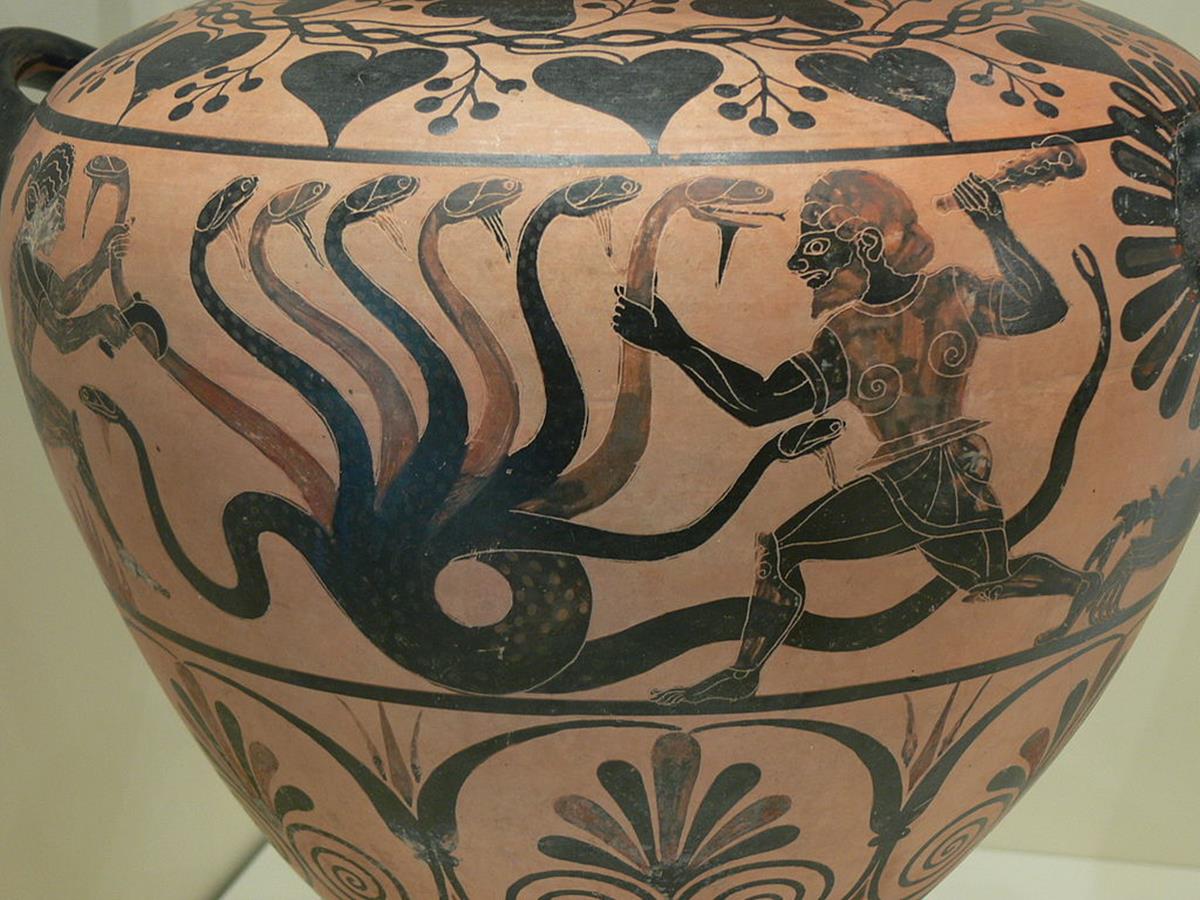
The Sirens
In Percy Jackson, the Sirens are a group of beautiful women who use their enchanting voices to lure sailors to their doom. They are connected to Greek mythology through their origin story and characteristics.
In Greek mythology, the Sirens were also beautiful women who lived on an island and sang enchanting songs that lured sailors to their deaths. They were depicted as half-bird, half-woman creatures, with the upper body of a woman and the lower body of a bird. The Sirens were known for their beautiful voices and irresistible songs, which they used to lure sailors to their island, where they would meet their deaths on the rocky shores.
In Percy Jackson, the Sirens are depicted as beautiful women who use their voices to lure sailors to their doom. They are encountered by Percy and his friends in "The Sea of Monsters," where they are depicted as deadly and alluring creatures who are able to manipulate men with their voices.
Artemis
In Percy Jackson, Artemis is a goddess and a member of the Olympian council who is connected to Greek mythology through her origin story and characteristics.
In Greek mythology, Artemis was the goddess of the hunt, wild animals, childbirth, and virginity. She was the daughter of Zeus and Leto, and the twin sister of Apollo. Artemis was often depicted as a fierce and independent warrior, hunting with a bow and arrow, and accompanied by a pack of hunting dogs.
In Percy Jackson, Artemis is also depicted as the goddess of the hunt and wild animals, and a member of the Olympian council. She is shown as a powerful and independent figure, with a fierce dedication to her duties as a hunter and protector of nature.
Artemis also has a specific role in Percy Jackson's storyline, where she is an ally and mentor to the main character, Percy Jackson. In the book "The Titan's Curse," Artemis is kidnapped, and Percy and his friends embark on a quest to rescue her. Throughout the book, Artemis plays a significant role in the plot, helping the heroes and showing her strength and wisdom.
Atlas
Atlas was one of the Titans, a race of powerful gods who ruled the world before the Olympian gods took over. Atlas was punished by Zeus and forced to hold up the sky on his shoulders as a punishment for his role in the Titanomachy, the war between the Titans and the Olympians.
In Percy Jackson, Atlas is also depicted as a Titan who is forced to hold up the sky on his shoulders. He is a powerful and intimidating figure who serves as an antagonist in the series.
In the book "The Titan's Curse," Atlas plays a significant role in the plot as the primary villain. He seeks to overthrow the Olympian gods and take over the world, using the power of the sky to do so. Percy and his friends must defeat Atlas and prevent him from achieving his goal.
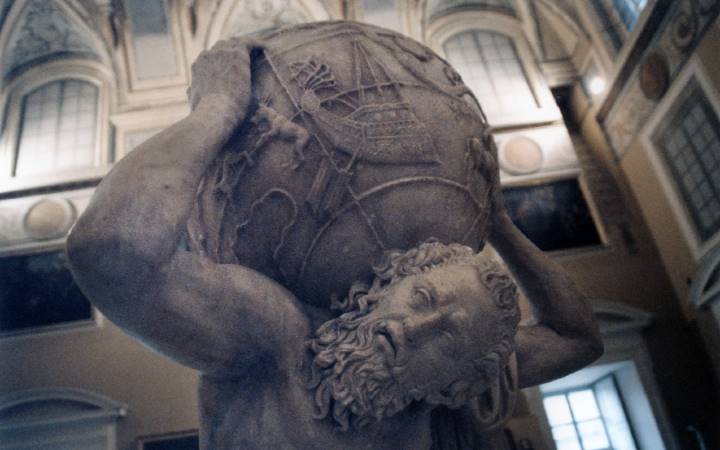
The Nemean Lion
In Percy Jackson, the Nemean Lion is a mythological creature that is connected to Greek mythology through its origin story and characteristics.
In Greek mythology, the Nemean Lion was a gigantic and ferocious beast that lived in the region of Nemea. It was said to be invulnerable to all weapons and had a hide that was impervious to all physical harm. The lion was eventually killed by the hero Heracles (Hercules) as one of his twelve labors, with Heracles using his own strength to strangle the beast.
In Percy Jackson, the Nemean Lion is also a powerful and formidable creature with invulnerable skin. It is encountered by Percy and his friends in "The Lightning Thief" during their quest to retrieve Zeus' stolen lightning bolt. The lion is depicted as a fierce and dangerous opponent, with its impenetrable hide making it a nearly impossible foe to defeat.
Nereus
In Greek mythology, Nereus was one of the oldest sea gods and a member of the race of sea deities known as the Nereids. He was the son of Pontus and Gaia, and the father of the Nereids, who were sea nymphs. Nereus was known for his prophetic abilities and was often referred to as the "Old Man of the Sea."
In Percy Jackson, Nereus is also depicted as a sea god who possesses prophetic powers. He is encountered by Percy and his friends in "The Son of Neptune" during their quest to stop the giant Polybotes from destroying the world. Nereus is depicted as an ally and mentor to the heroes, providing them with valuable information and guidance on their quest.
Pan
Pan was the god of the wild, shepherds, and flocks. He was known for his mischievous and playful personality, and his appearance, which was half-human and half-goat. Pan was often depicted as playing a pan flute and was closely associated with nature and the countryside.
In Percy Jackson, Pan is also depicted as a god of nature and the wild, and is known for his love of music and his pan flute. However, in the series, Pan is portrayed as a fading god, who has lost much of his power due to humanity's destruction of nature. Percy and his friends embark on a quest to find Pan and restore his power, with the goal of preventing the complete destruction of nature.
The depiction of Pan in Percy Jackson is faithful to his portrayal in Greek mythology, with the character embodying the same traits and characteristics that made him a beloved figure in ancient Greece. Additionally, the use of Greek gods and mythological creatures like Pan helps to create a sense of connection to the ancient world in the Percy Jackson series, while also addressing modern environmental concerns.
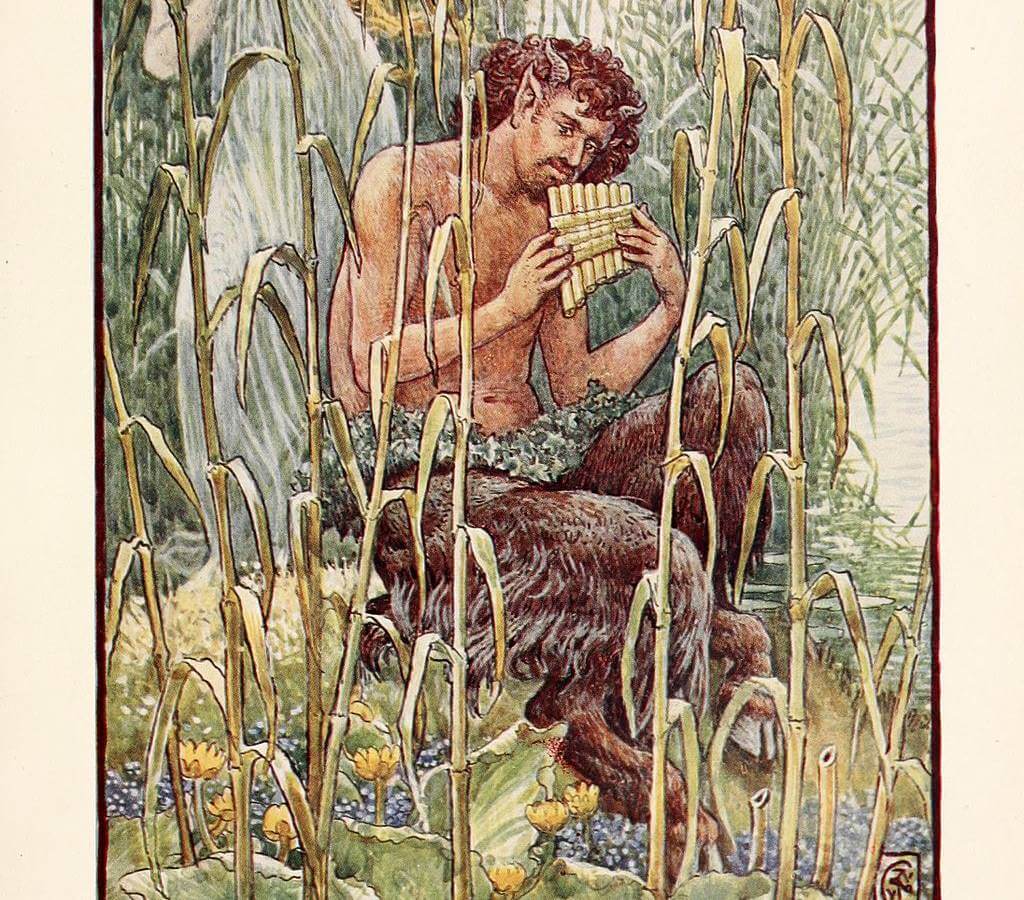
Daedalus
Daedalus is a famous Greek inventor who is connected to Greek mythology through his origin story and characteristics.
In Greek mythology, Daedalus was a renowned inventor and craftsman who was famous for his ability to create complex and intricate machines and devices. He was the son of the god Hephaestus and was said to have been the first person to invent and use sails for ships. Daedalus is best known for building the Labyrinth on the island of Crete, which was used to contain the Minotaur, a monster with the head of a bull and the body of a man.
In Percy Jackson, Daedalus is also depicted as a brilliant inventor who has created a number of impressive machines and devices. He is encountered by Percy and his friends in "The Battle of the Labyrinth" when they enter the Labyrinth to stop the Titan army from invading Camp Half-Blood. Daedalus is portrayed as a complex character, with his brilliant mind and ego causing him to make questionable decisions and alliances.
Icarus
In Greek mythology, Icarus was the son of Daedalus, a master craftsman and inventor. Daedalus was imprisoned on the island of Crete, and to escape, he fashioned a set of wings made of feathers and wax for himself and his son. Daedalus warned Icarus not to fly too close to the sun, as the wax would melt and the wings would fail. However, Icarus became overconfident and flew too close to the sun, causing his wings to melt and he fell to his death.
In Percy Jackson, Icarus is also depicted as the son of Daedalus and is encountered by Percy and his friends in "The Battle of the Labyrinth." In the book, he is portrayed as a ghost who is unable to rest until his father is saved. His tragic fate serves as a warning to the characters about the dangers of overconfidence and the importance of heeding advice.
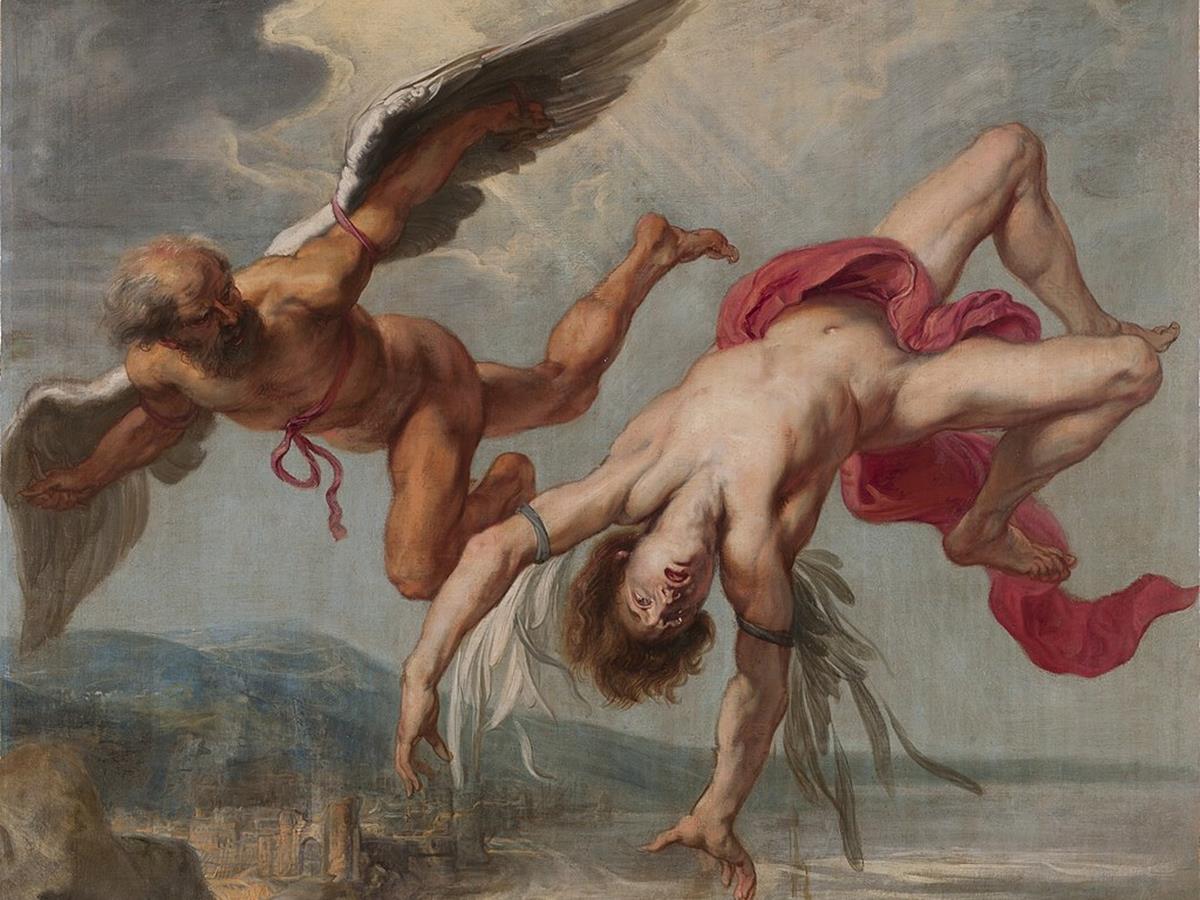
Perdix
In Greek Mythology, Perdix was the nephew and apprentice of Daedalus, a famous inventor and craftsman. Perdix was known for his own inventive talents and was said to have invented the saw and the compass. However, he was also known for his pride and arrogance, which led to his downfall. According to the myth, Perdix was transformed into a bird, either a partridge or a hawk, by his uncle Daedalus in order to save him from falling to his death.
In Percy Jackson, Perdix is also depicted as an inventor and apprentice of Daedalus. However, in the series, he is portrayed as a victim of the goddess Athena, who turned him into a partridge after he offended her by claiming to be a better inventor than her. Percy and his friends encounter Perdix's spirit in "The Mark of Athena" and learn about his tragic story.
The River Styx
The River Styx was one of the five rivers that flowed through the Underworld, the realm of the dead. It was said to be a dark and mysterious river that separated the world of the living from the world of the dead. According to the myth, when a person died, their soul would be ferried across the River Styx by the boatman Charon, who required a fee for his services. The River Styx was also associated with the goddess Styx, who was said to have sided with Zeus during the Titanomachy, the war between the Titans and the Olympian gods.
In Percy Jackson, the River Styx is also depicted as a dark and mysterious river that separates the world of the living from the world of the dead. In the series, it is portrayed as a powerful force that can be used to give immortality or invincibility to a person, but at a great cost. Percy Jackson himself goes on a dangerous quest to dip himself in the River Styx in order to become invincible and defeat the Titan army.
The Sphinx
In Percy Jackson, the Sphinx is a monster that is connected to Greek mythology through its origin story and characteristics.
In Greek mythology, the Sphinx was a creature with the head of a human and the body of a lion. It was said to have the wings of a bird and the tail of a serpent. The Sphinx was known for its riddles and would pose a riddle to anyone who came near it. If the person could not answer the riddle, the Sphinx would devour them. The most famous riddle that the Sphinx posed was: "What creature walks on four legs in the morning, two legs at noon, and three in the evening?" The answer was a human, who crawls on all fours as a baby, walks on two legs as an adult, and uses a cane in old age.
In Percy Jackson, the Sphinx is also depicted as a creature with the head of a human and the body of a lion. It is encountered by Percy and his friends in "The Titan's Curse" and is portrayed as a cunning monster that poses a riddle to its victims. The riddle posed by the Sphinx in the book is not the same as the one in Greek mythology, but it still serves as a test of the characters' intelligence.
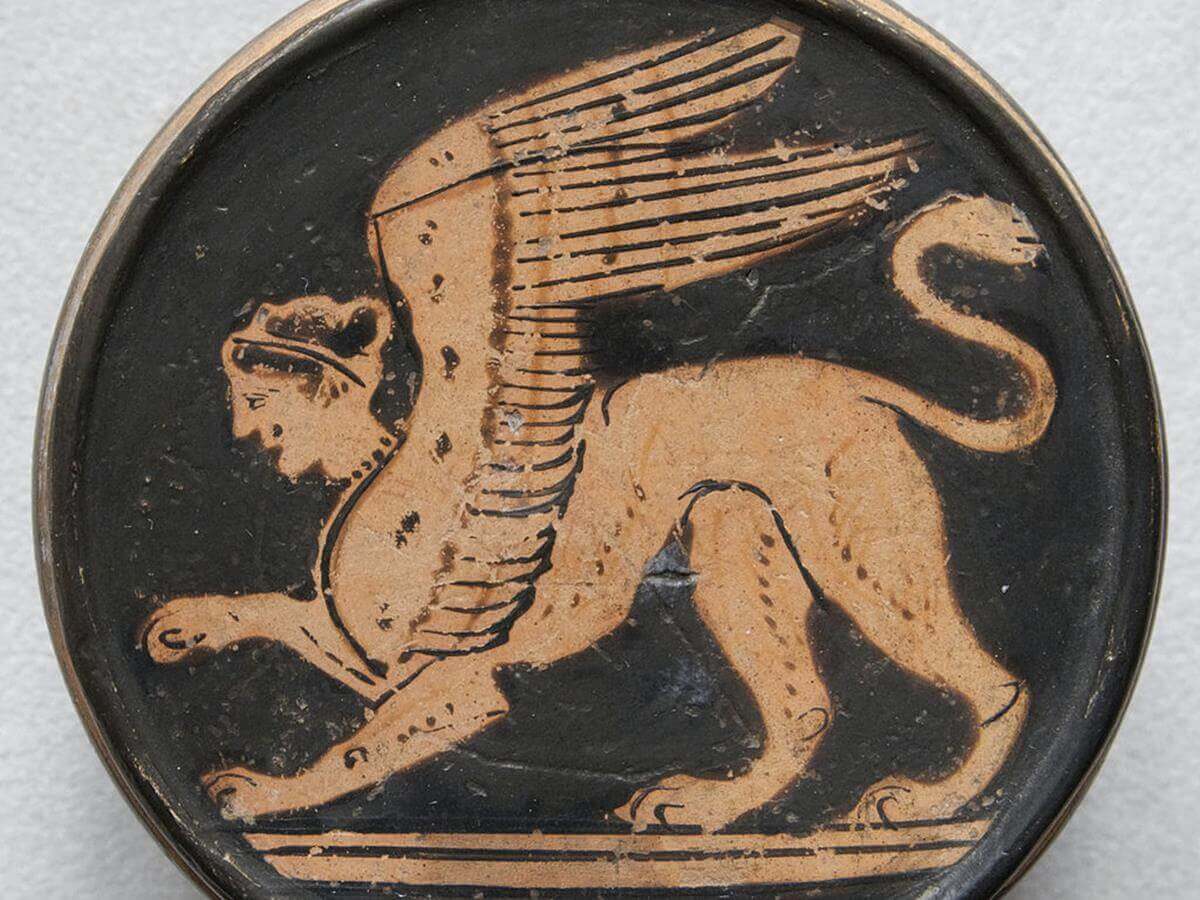
Ogygia
Ogygia is an island that is connected to Greek mythology through its origin story and characteristics.
In Greek mythology, Ogygia was the island home of the nymph Calypso, who was the daughter of the Titan Atlas. Calypso was known for her beauty and her singing voice, and she was said to have kept the hero Odysseus on her island for seven years during his journey home from the Trojan War. In Homer's "Odyssey," Ogygia is described as a paradise-like island that is lush and abundant in resources.
In Percy Jackson, Ogygia is also depicted as an island that is home to the nymph Calypso. Percy visits the island in "The Battle of the Labyrinth" and encounters Calypso, who is portrayed as a beautiful and lonely figure who has been trapped on the island for centuries. The island is also described as a paradise-like location with abundant resources.
Mount Othrys
In Greek mythology, Mount Othrys was one of the two mountains in which the Titans built their stronghold during their war with the Olympians. The other mountain was Mount Olympus, which was the stronghold of the Olympians. The Titans were eventually defeated by the Olympians, and Mount Othrys was destroyed and buried under the sea.
In Percy Jackson, Mount Othrys is also depicted as the former stronghold of the Titans during their war with the Olympians. In the series, the mountain is destroyed and buried under the ocean after the war, and it remains a forbidden and dangerous location.
Hestia
In Greek mythology, Hestia was one of the twelve Olympian gods and was considered to be one of the three virgin goddesses, along with Athena and Artemis. Hestia was the goddess of the hearth, home, and family, and she was responsible for maintaining the sacred fire of the Olympian gods. Hestia was revered as a kind and gentle goddess, and she was often invoked during family gatherings and feasts.
In Percy Jackson, Hestia is also depicted as one of the twelve Olympian gods and the goddess of the hearth and home. She is portrayed as a kind and nurturing figure who is respected by all the other gods, but who chooses to abstain from their squabbles and politics. Hestia is also shown to be responsible for maintaining the sacred flame of the Olympian gods, which is used to maintain the balance and harmony of the world.
Demeter
Demeter was one of the twelve Olympian gods and was the sister of Zeus, Poseidon, Hera, Hades, and Hestia. Demeter was the goddess of agriculture, fertility, and the harvest, and she was responsible for the growth of crops and the well-being of the earth. Demeter was often depicted as a kind and nurturing figure, but she was also known for her fierce and protective nature.
In Percy Jackson, Demeter is also depicted as one of the twelve Olympian gods and the goddess of agriculture and the harvest. She is shown to be a nurturing and protective figure who is fiercely devoted to her daughter Persephone. Demeter is also depicted as being deeply connected to the earth and its natural cycles, and she is often shown using her powers to control the growth of plants and crops.
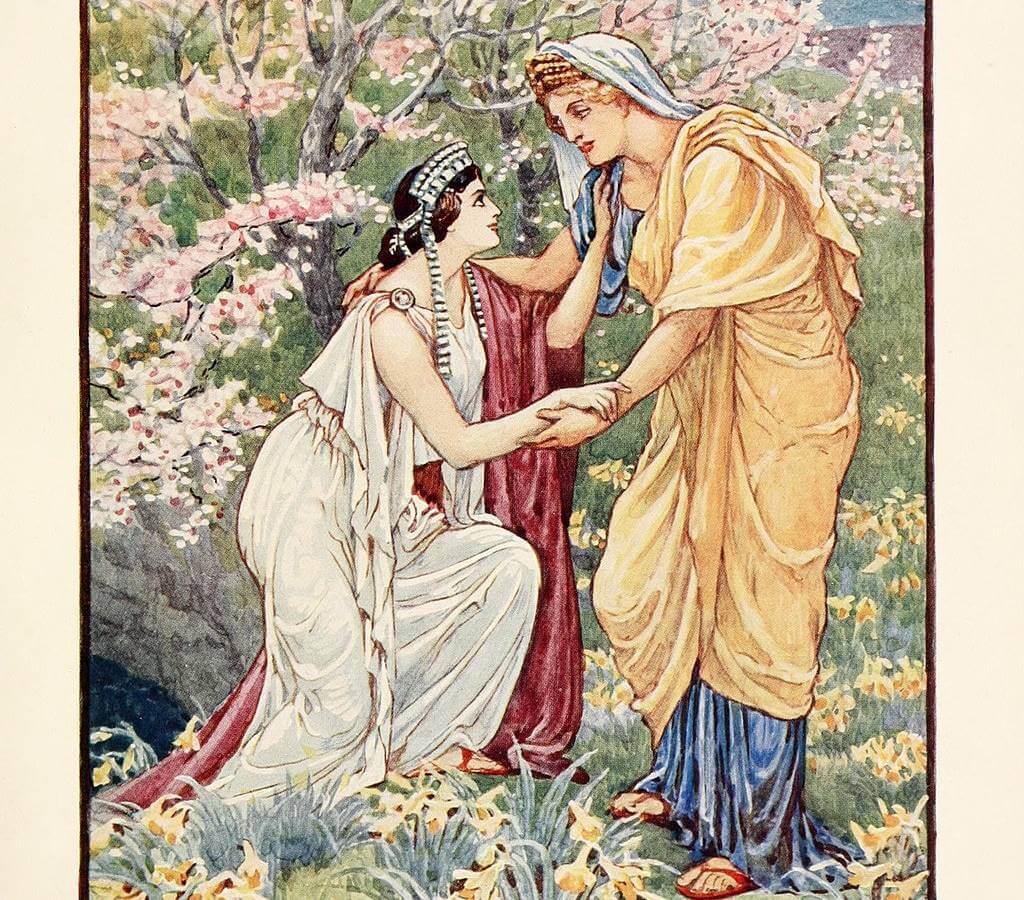
Hecate
Hecate was a goddess associated with magic, witchcraft, and the night. She was also associated with crossroads and was often depicted as a three-headed goddess who could see in all directions. Hecate was a powerful and mysterious figure who was sometimes associated with dark magic and witchcraft.
In Percy Jackson, Hecate is also depicted as the goddess of magic, witchcraft, and crossroads. She is shown as a powerful and mysterious figure who is often called upon by the other gods for assistance with magical matters. Hecate is also portrayed as having a close relationship with the demigod Percy Jackson, who is able to call upon her for help during his adventures.
Prometheus
In Greek mythology, Prometheus was a Titan who was known for his intelligence and his fondness for humans. He stole fire from the gods and gave it to humans, along with many other gifts of civilization, such as agriculture and metalworking. As a punishment for this act, Prometheus was chained to a rock and had his liver eaten by an eagle every day, only for it to regenerate overnight, as part of his eternal torment.
In Percy Jackson, Prometheus is also depicted as the Titan who stole fire from the gods and gave it to humans. He is shown to be a wise and intelligent figure who has a deep understanding of both gods and humans. In the series, Prometheus helps Percy and his friends in their quest to prevent the rise of the Titan lord Kronos, as he has a deep hatred for the gods who have punished him for his actions.
Odysseus
In Percy Jackson, Odysseus is connected to Greek mythology through his role as a famous Greek hero who played a significant role in the Trojan War.
In Greek mythology, Odysseus was the king of Ithaca and a famous hero who played a key role in the Trojan War. He was known for his intelligence, cunning, and bravery, as well as his long and perilous journey home after the war, which was the subject of the epic poem "The Odyssey."
In Percy Jackson, Odysseus is also depicted as a famous Greek hero who played a significant role in the Trojan War. He is shown as a wise and experienced figure who is respected by the other heroes and gods, and who is consulted by Percy and his friends for advice and guidance during their own quests.
Antinous
In Greek mythology, Antinous was one of the suitors of Penelope, the wife of Odysseus, in the epic poem "The Odyssey." He was known for his arrogance, cruelty, and disrespect towards Penelope and her son Telemachus. In the poem, he is eventually killed by Odysseus, who returns home disguised as a beggar and engages in a battle with the suitors.
In Percy Jackson, Antinous is also depicted as one of the suitors of Penelope. He is shown as a cruel and arrogant figure who bullies the other suitors and who is eventually defeated by Percy and his friends in a battle.
Eurymachus
In Greek mythology, Eurymachus was also one of the suitors of Penelope, the wife of Odysseus, in the epic poem "The Odyssey." He was known for his persuasive speech and ability to manipulate others, and like Antinous, he was eventually killed by Odysseus when he returned home.
In Percy Jackson, Eurymachus is also depicted as one of the suitors of Penelope. He is shown as a cunning and manipulative figure who tries to turn the other suitors against Percy and his friends, and who is eventually defeated in a battle.
The Acropolis of Athens
In Percy Jackson, the Acropolis of Athens is connected to Greek mythology as it is the site of the Parthenon, a temple dedicated to the goddess Athena, who is a central figure in Greek mythology.
In Greek mythology, Athena was the goddess of wisdom, warfare, and crafts, and was highly revered in ancient Athens. The Parthenon was built in the 5th century BCE as a temple dedicated to Athena, and it housed a large statue of the goddess made of ivory and gold.
In Percy Jackson, the Acropolis of Athens and the Parthenon are depicted as important locations where Percy and his friends seek advice and guidance from the gods. Athena herself appears in several scenes, as do other gods and goddesses associated with the Acropolis, such as Poseidon, the god of the sea.
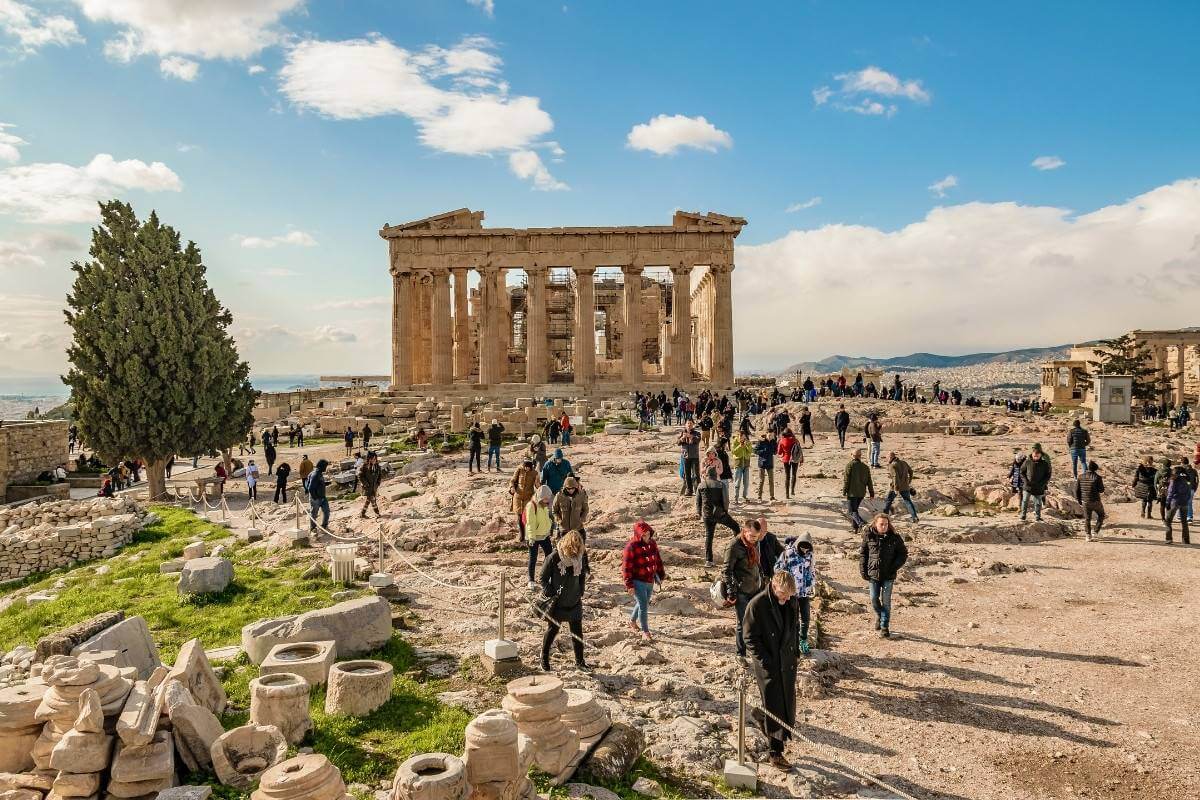
Delphi
Delphi is connected to Greek mythology as it was the site of the famous Oracle of Delphi, which was believed to be a source of prophetic wisdom and guidance from the gods.
In Greek mythology, Delphi was said to be the center of the world, marked by the omphalos, a stone that was believed to represent the navel of the earth. The Oracle of Delphi was located in a temple dedicated to the god Apollo, who was associated with prophecy and healing.
The Oracle of Delphi was renowned throughout ancient Greece for its prophetic powers, and was consulted by people seeking advice and guidance from the gods. In Percy Jackson, Delphi serves as an important location where Percy and his friends seek answers to their questions and receive prophetic guidance from the oracle.
See also: All Percy Jackson Tours in Greece with Practical Info

Olympia
In Greek mythology, Olympia was the sacred sanctuary of Zeus, located in the region of Elis in the western part of the Peloponnese. The ancient Olympic Games were held there from 776 BCE until 393 CE and were an important part of Greek culture and religion.
In Percy Jackson, Olympia is depicted as an important location where Percy and his friends encounter various mythological creatures and engage in athletic competitions. The location is also associated with Zeus, who is portrayed as a powerful and imposing figure.
The Argo
The Argo was built by Argus with the help of the goddess Athena and was manned by a crew of heroes, including Jason, Heracles, and Orpheus. The ship was said to possess magical powers, and was able to navigate through treacherous waters and overcome dangerous obstacles on its journey to Colchis.
In Percy Jackson, the Argo is depicted as a modern-day ship that is used by the characters on their quest to save the world from various threats. The ship is also associated with the ancient heroes and their quest for the Golden Fleece, as well as with the legacy of Greek mythology and its continued influence on modern-day culture.
The Temple of Olympian Zeus
The Temple of Olympian Zeus in Percy Jackson is connected to Greek mythology because it was built in honor of Zeus, the king of the gods and one of the most important deities in the Greek pantheon.
In Greek mythology, Zeus was the son of the titan Cronus and the goddess Rhea. He was the ruler of the heavens and the earth, and was associated with thunder, lightning, and the forces of nature. Zeus was also believed to be the protector of justice, hospitality, and oaths, and was revered as the patron of kings and warriors.
The Temple of Olympian Zeus was one of the largest temples in ancient Greece and was dedicated to Zeus in recognition of his power and importance. It was constructed over a period of several centuries, beginning in the 6th century BCE and continuing until the 2nd century CE.
In Percy Jackson, the Temple of Olympian Zeus is depicted as a site of great power and significance, where the gods can gather and make important decisions. It is also associated with the character of Zeus, who is portrayed as a powerful and imposing figure who commands respect and awe.
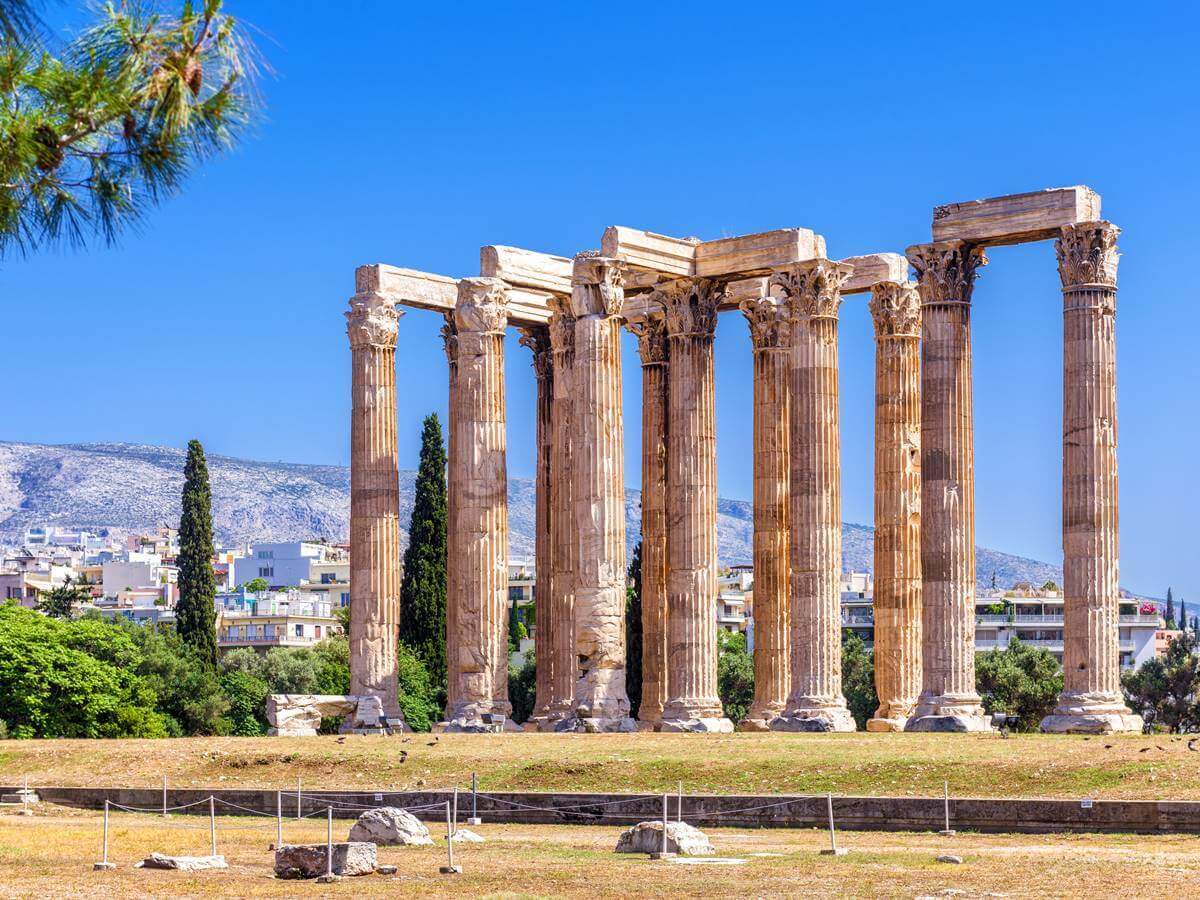
Pylos
In the Percy Jackson series, Pylos is mentioned as the location of the ancient ruins of the Palace of Nestor, which is a real archaeological site in Greece. In Greek mythology, Pylos was also the kingdom of Nestor, a famous king and warrior who fought in the Trojan War alongside heroes like Achilles and Odysseus.
In Homer's epic poem, the Iliad, Nestor is portrayed as a wise and respected leader who offers advice and guidance to the Greek heroes. His kingdom of Pylos is also mentioned in other ancient Greek texts, including the works of Homer and the historian Thucydides.
The Island of Delos
The Island of Delos is mentioned as the birthplace of the Greek gods Apollo and Artemis. This connection to Greek mythology is significant because Delos was considered a sacred island in ancient Greece, and it was believed to be the birthplace of these two powerful deities.
According to Greek mythology, Leto, the mother of Apollo and Artemis, was unable to find a place to give birth to her children because she was pursued by the jealous goddess Hera. However, she finally found refuge on the Island of Delos, which was a floating island at the time.
After giving birth to Apollo and Artemis on the island, Leto made it a sacred place, and it became a center of worship for the two gods. Many temples and shrines were built on the island in their honor, and it became a place of pilgrimage for the ancient Greeks.
Asclepius
Asclepius is the Greek god of medicine, healing, and rejuvenation in the series of Percy Jackson. In Greek mythology, Asclepius was a real deity and was one of the most important gods in the ancient Greek pantheon.
According to Greek mythology, Asclepius was the son of Apollo and a mortal woman named Coronis. He was a skilled healer and was known for his ability to cure even the most serious of illnesses. Asclepius was often depicted holding a staff with a serpent wrapped around it, which became a symbol of medicine and healing.
Asclepius was also associated with the cult of healing, which was a popular religious practice in ancient Greece. People would come to his temples and shrines to seek his guidance and healing powers. The most famous temple of Asclepius was located in Epidaurus, which was a major center of healing and medicine in ancient Greece.
Epidaurus
In the Percy Jackson series, Epidaurus is mentioned as the location of a famous temple dedicated to the Greek god of healing, Asclepius. In Greek mythology, Epidaurus was a real place, and it was known as one of the most important centers of healing in ancient Greece.
The temple of Asclepius at Epidaurus was a famous pilgrimage site where people from all over Greece would come to seek healing and guidance from the god. The temple was also known for its impressive architecture and was considered a masterpiece of ancient Greek design. Today, the ruins of the temple can still be seen near the modern-day town of Epidaurus in Greece.
Read also:
About the author: Our team at Greek TravelTellers consists of academics and lovers of Greek culture. Our vision is to convey our knowledge and Greek values through unique tours and experiences. Through our blog, we hope to bring Greek history and culture closer to you. Feel free to learn more about us.



